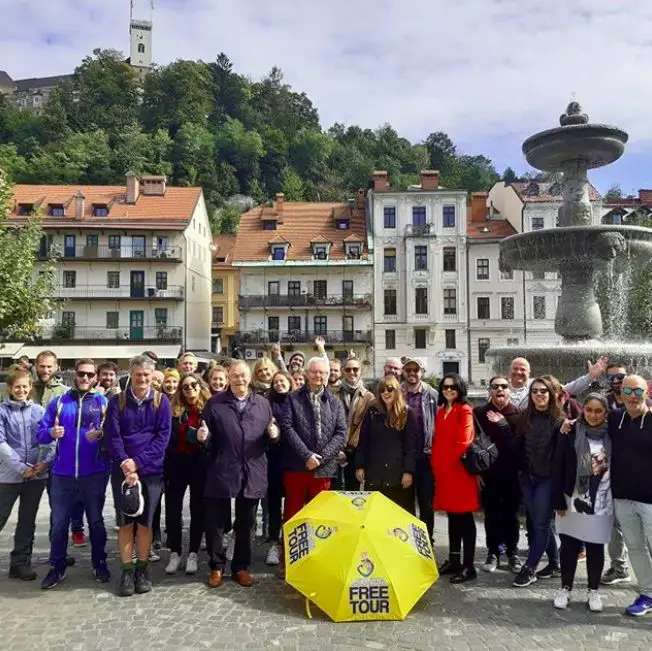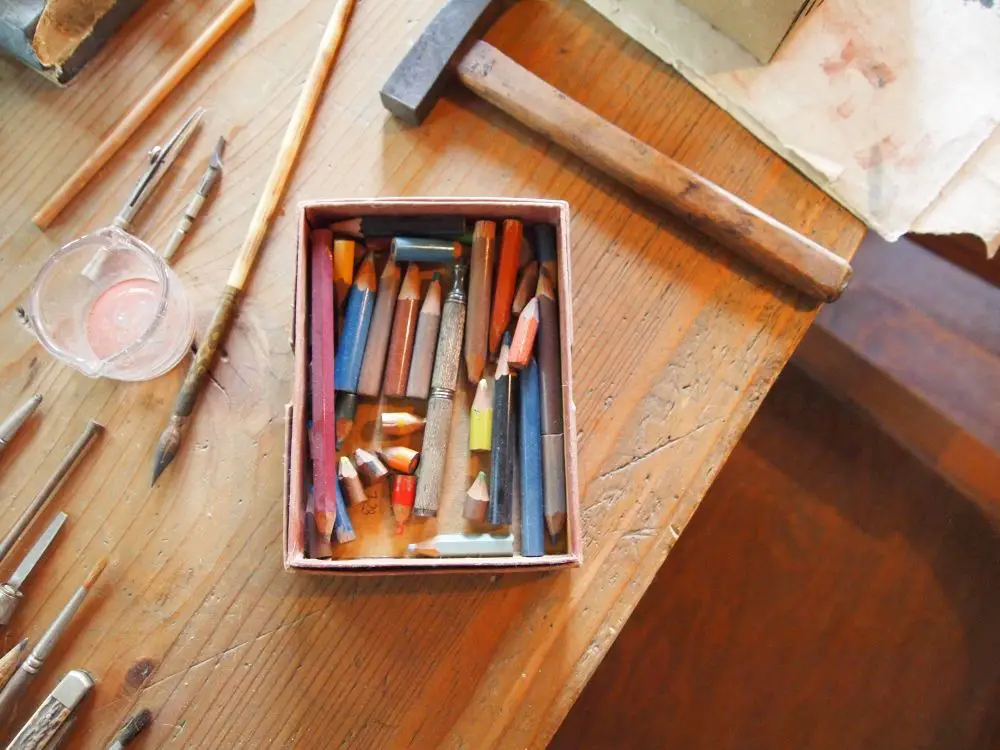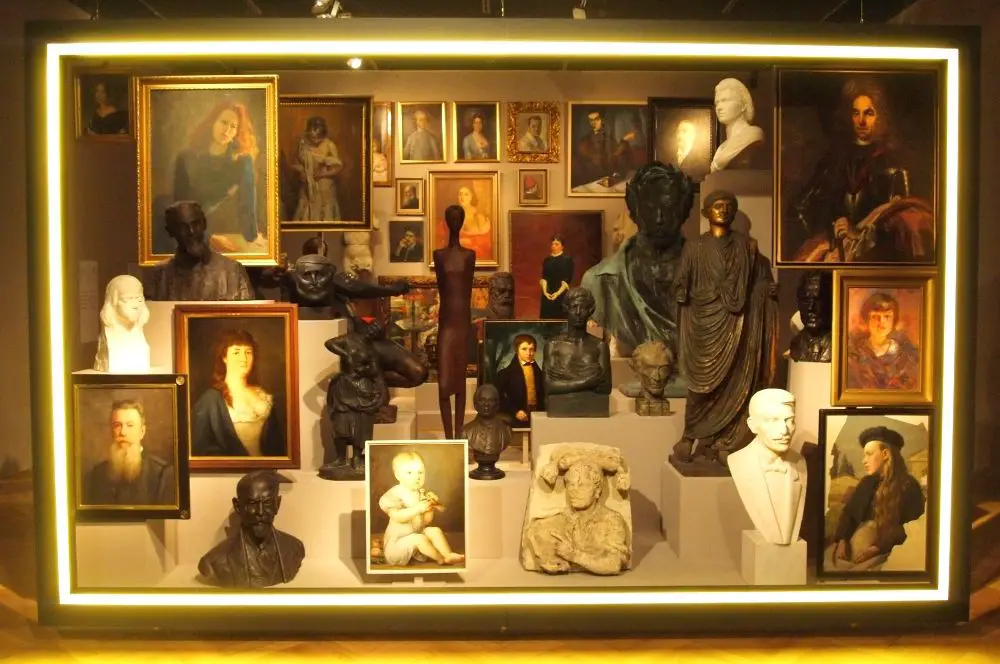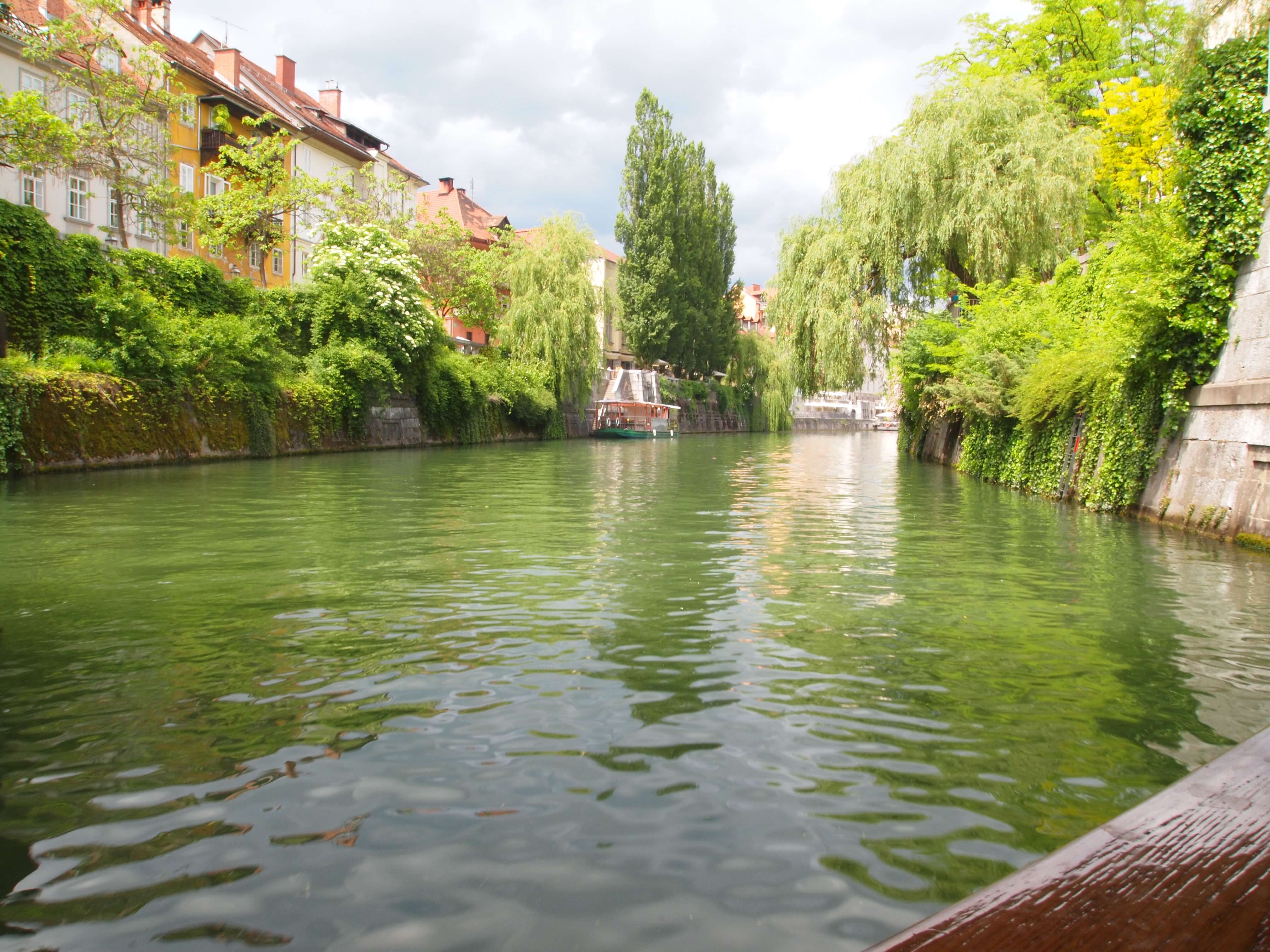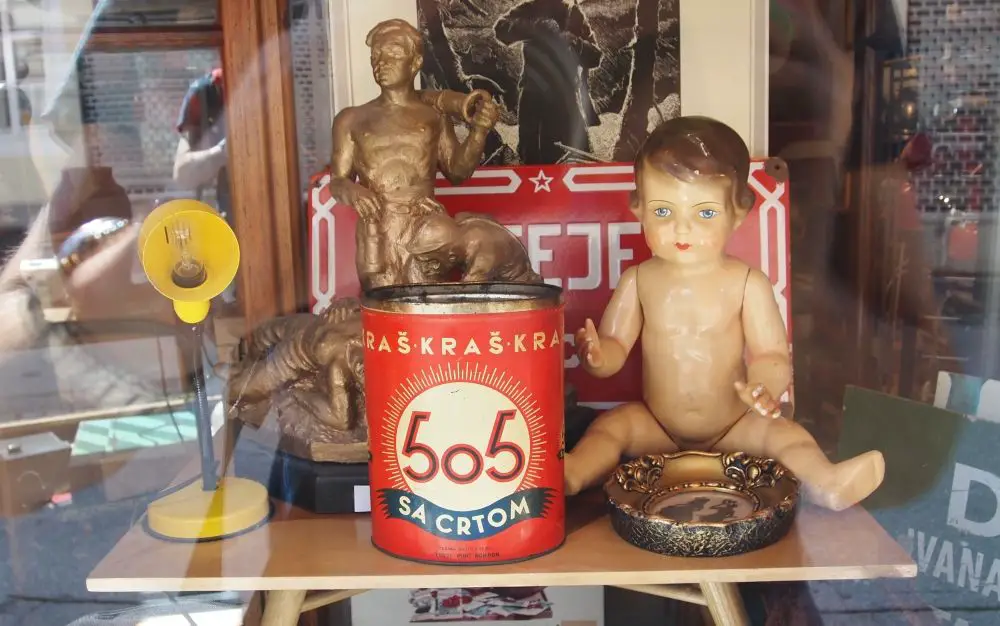News
STA, 28 February 2020 - The security apparatus of the state will be a major priority for the incoming centre-right coalition, according to the coalition agreement, which suggests asylum procedures will be tightened, the police force strengthened, and army conscription reintroduced.
The agreement makes "efficient protection of the state border" the no. 1 priority in the chapter on security and defence. Asylum procedures will be "consistently respected" and "mandatory integration of foreigners" instituted.
The priorities are broadly in line with the agenda of the Democrats (SDS), who have long advocated a tougher stance on migrations and called for stronger border security.
The police force gets several mentions, with the coalition pledging to "sort out the situation in the police" and "sort out the status, staffing and operation of the police". Consideration will also be given to the re-establishment of a secondary school for police officers, which was shut down in 1999 and transformed into a police academy.
While other details have not been disclosed, some media have speculated that a thorough overhaul of the police may be in the works. The speculation is borne out by a point from the SDS's election platform from 2018, which states that "during the transition from the former totalitarian regime to a democratic society, the criminal police has not been entirely purged by ideologically blinded officers".
One major priority that has captured the imagination of the public is the idea to gradually phase in conscription military service, which was abolished in 2003 and replaced with a professional force; the idea was floated by the SDS in January and was immediately endorsed by the Pensioners' Party (DeSUS), one of the partners in the emerging four-way coalition.
The army has for years had problems enlisting enough soldiers and some see conscription as a good way of increasing the potential pool of professional soldiers.
Critics say introducing conscription will not improve the performance of the military until there is sufficient funding since the conscription system is potentially even costlier than a professional military. Some have also questioned whether conscription makes sense from a military perspective given the advanced technological requirements of modern warfare.
The incoming government also plans to develop cyber-defence capabilities and beef up measures to protect critical infrastructure.
This is the first in a series on the new government’s plans, to be posted in the next few days, with the whole set here
STA, 29 February 2020 - The likely new government plans to tackle housing issues among the young and problems stemming from population ageing, according to the social affairs chapter of the coalition agreement. It does not intend to change pension rights though.
The incoming centre-right government vows to set up a housing scheme for young families and build rental flats, the top pledge of the 19-point Youth, Family, Pensions and Social Affairs chapter of the agreement.
It plans to re-introduce a scheme under which families with two or more children enrolled in public kindergarten simultaneously would only pay for the first child, a policy that had been put in place by the first Janez Janša government in 2008 and was later abandoned due to austerity measures.
Family-friendly policies, designed to boost the country's birth rate, include plans to introduce a universal child allowance and incentives promoting "greater enrolment of all children in kindergartens at least a year before starting school".
The document does not mention implementing a Constitutional Court decision mandating equal funding of private and public primary schools, however Janša, the leader of the Democrats (SDS), the party expected to lead the coalition, has said that it goes without saying the parties would also implement any Constitutional Court ruling regardless of whether it is specifically mentioned in the agreement.
Tackling population ageing, the emerging four-party coalition intends to establish a public pension support fund as well as a government demographic office, both headquartered in Maribor, Slovenia's second largest city - initiatives that may be considered as steps towards decentralisation.
The coalition also plans to reform social transfers to prevent abuse of the system and integrate recipients of social benefits who are able to work into the community work placement scheme.
The minimum amount of a full pension is to be gradually brought nearer the poverty threshold, "depending on economic growth and budget capacities". To preserve the existing pension ratios, other pensions would be raised as well.
Addressing the shortage of nursing homes, the coalition pledges to complete the construction of a couple of such facilities as well as build at least five new nursing homes.
It also intends to carry out additional pension increases on top of regular annual pension indexation, assuming GDP growth reaches certain thresholds.
The coalition also promises to provide the chance of spa or climatic treatment for war victims and veterans.
This is the second in a series on the new government’s plans, to be posted in the next few days, with the whole set here
Check the date at the top of the page, and you can find all the "morning headlines" stories here. You can also follow us on Facebook and get all the news in your feed.
A schedule of all the main events involving Slovenia this week can be found here
This summary is provided by the STA:
Foreign Ministry welcomes Afghanistan peace deal
LJUBLJANA - The Foreign Ministry welcomed the signing of a landmark peace agreement between the US and Afghanistan's Taliban, saying that only bilateral and inclusive dialogue striving for compromise solutions could ensure a successful agreement leading to sustainable peace and stability for all citizens of Afghanistan. It also welcomed Afghanistan's progress so far and its achievements in fighting terrorism as well as human rights efforts. The ministry pointed out that Slovenian military remained in Afghanistan. "The allies will continue deciding on further steps together in cooperation with Afghanistan's government," it said.
Last Slovenian Diamond Princess passengers return home
LJUBLJANA - The last two Slovenian passengers from the quarantined cruise ship Diamond Princess returned to Slovenia, flying home on a commercial flight after renewed tests for the coronavirus turned out negative in Japan, Health Ministry State Secretary Simona Repar Bornšek told the press, adding that the pair felt well and were no longer infectious. Out of the six Slovenian passengers on the ship, the two were the only ones who had tested positive and been hospitalised in Japan where they experienced only mild symptoms. The latest tests, taken twelve days after the first, were negative.
Slovenia second at Ski Jumping World Cup team event
LAHTI, Finland - The Slovenian men's ski jumping team won second place in the Ski Jumping World Cup event in Finland's Lahti, finishing only behind Germany. Austria were third. The Slovenian team included Cene Prevc, Timi Zajc, Peter Prevc and Anže Lanišek.
Visiting Ljubljana? Check out what's on this week, while all our stories on Slovenia, from newest to oldest, are here
If you're learning Slovenian then you can find all our dual texts here
If you're not in town for the week of this guide (2 - 8 March, 2020) then you can see all the editions here, and if there's event or activity you want to promote in a future edition of What's on in Ljubljana please get in touch with me at flanner(at)total-slovenia-news.com or try and find me on Facebook. If you want something a little different and easy to print, then a comprehensive PDF of events for the next seven days, as prepared by Ljubljana Tourism, is here. If you're in town and want to follow the news then check out our regular morning headlines for Slovenia here.
The last day of this guide is 8 March, or Women’s Day, and since one day isn’t enough the 21st edition of the Red Dawns Festival (Rdeče zore / 21st Red Dawns) is back. This is Ljubljana’s International Feminist and Queer Festival that, with the Janez Janša likely to become PM next week, is set to be livelier than ever. It starts 5 March and ends on Sunday, with the programme here and the Facebook here. Workshops, music, films, food and above all a chance to engage and connect with a vibrant community working to make Slovenia a better place for everyone.
Want to advertise in this space? Learn more here.
Similarly, the Festival of Tolerance runs most of the week, 1-6 March, to remember and reminds us of the horror of the Holocaust. Films shown as part of the programme with hvae subtitles in both English and Slovene. Everything is free to enter, and centred on the Ljubljana Mini Theatre's Theatre for Children and Young People, with more details here.
Engineering Survey Shows 5 Apartment Blocks in Downtown Ljubljana Should Be Pulled Down
Another festival, this one running until 8 March, is the Fabula Festival of World Literatures, with more details here.
Still open until 5 March, 2020, Magic Ice-rink Lumpi Park offers 600 m2 of the covered ice surface and 180 m of ice-skating paths which enable you to skate through the Sports park Savsko naselje, at Kranjčeva ulica 24. Details here.
Monday Kino Šiška has one of the most prominent Slovenian jazz musicians abroad, New-York-based saxophonist Jure Pukl, in town to promote a new album as head above. Tuesday the same venue has Riverside, a Polish prog rock band who’ll be ending their Wasteland tour in Ljubljana.
Tuesday to Saturday SNG Opera and Ballet is putting on Verdi’s Luisa Miller. Details. Same evening, but at Cankarjev dom, you can enjoy Dejan Terzić Axiom, Samo Šalamon Trio feat. Igor Matković, & Kristijan Krajnčan. The first part of the evening will focus on drums, the second on guitar
Thursday, 5 March, Lola Marsh return to Kino Šiška . Same evening the Slovenian Philharmonic Orchestra will be led by the conductor Philipp von Steinaecker, and supporting the soprano Nika Gorič, with a programme of Osterc, Berg and Mahler
Friday night is Jazz Night at the Castle, and this week the place at the top of this hill is being taken by the Joe Pandur International Quartet, playing latin/jazz. Mr Pandur is in the clip below, but with support, I think, from a different band. Friday, 6 March, there’s also Irish music and dance with Erin’s Heartbeat, on stage at Španski boric (Zaloška cesta 61). Details.
Tovarna Rog, at the far, dirty end of Turbarjeva cesta, will have another edition of RedTecHno starting at 23:59 on Friday, with techno of the Berlin, dark and minimal varieties.
Saturday the Pocket Teater Studio has Breath of the East, a mosaic of music and dance form Turkey, Tunisia, Algeria, Iran, Armenia, India and more in the intimate atmosphere of the studio. The collaboration fee is 20€ and includes wine and treats. Seats, as always, will be limited and a sold night guaranteed, so reserve your seat at pocket.teater@gmail .com. The same evening is the biggest name of the week, Andrea Bocelli, 19:00 to 22:00, in Stožice (tickets).
Saturday there’s also the chance to see MI2, with an acoustic show in Cankarjev dom. Looking further ahead, to 31 March, I’ll highlight The Mission playing Kino Šiška if only because they were the first gig I ever saw, back in 1987 or 88, before rave made guitars old – but we still danced like maniacs to this. Anyway, key point: that was over 30 yrs ago and I still remember it, so go out and make some good memories this week.
New, new-ish and notable movies in town this week include the following.
A new book came out recently that tells some of the stories of Trubarjeva cesta – you can learn more about it here. If you want to buy a copy, look / ask around on your next visit to the street.
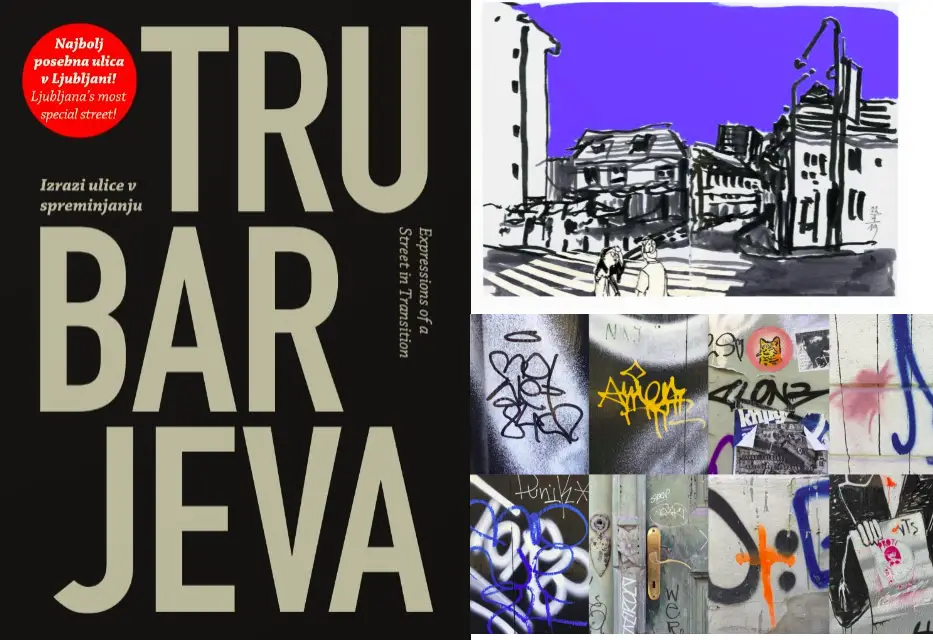
Ljubljana is forecast to be the fastest-warming city in the world over the next few decades.
How much do tourists spend in Slovenia? Find out here
You may have heard about Free Tour Ljubljana, the tour company that’s #1 on TripAdvisor for the city and gives away its main product. What’s the deal with that? Find out here.
While the Old Town is quaint, and full of music, where does Ljubljana really shop? One popular answer is BTC City, a vast complex of malls, entertainment facilities and more, including more than 70 different food vendors, offering everything from Slovenian to Thai, Indian to Italian, Mexican to Chinese. Check out a visit before the recent renovation was finished for some idea of what's on offer here.
You're in the town of Slavoj Žižek, but do you find yourself lost when conversation turns to the philosopher? If so, check out our collection of quotes and clips to learn more.
K-pop band Red Velvet came to Ljubljana - with English subtitles
- Cinemas and films
- Clubbing
- Live music
- Theatre and dance
- Harm reduction and drug testing
- Things to do with children
- LGBT+ Ljubljana
- Ljubljana Castle
- Museums and galleries
- Other things to do in Ljubljana
- Daytrips
- Getting around
- Emergencies
Cinemas and films
You can read about all the cinemas in town here, while a selection of what’s playing this week is below, and note that kids' movies tend to be shown in dubbed versions, while non-English language movies for older viewers will have Slovenian subtitles.Parents should also pay attention to Kinobalon, which is Kinodvor's regular weekend series of film screenings and events for children, from babies on up, with special parent/child events, "first time in a cinema" screenings, and babysitting. Learn more about it here, and see the current schedule here.
Note - most children's films will be dubbed (sinhronizirano) - for subtitles look for 'podnapisi'.
Kinodvor –This is an arts cinema, not far from the train station, that shows new features as well as hosting the occassional festival.
Kinoteka – And not far from Kinodvor you can find this revival cinema, which shows art house classics along with some deep dives in the archives.
Kino Bežigrad - A relatively small theatre, but one which usually has the biggest of the new releases.
Kolosej -The multiplex out at BTC City Mall shows all the big movies, with well over a dozen titles on the schedule, although note that there are far more movies than screens, so some of the older ones mayonly be playing once or twice a week.
Komuna – The cinema in a basement behind Nama department store shows two or three different features a week, usually including the biggest titles.
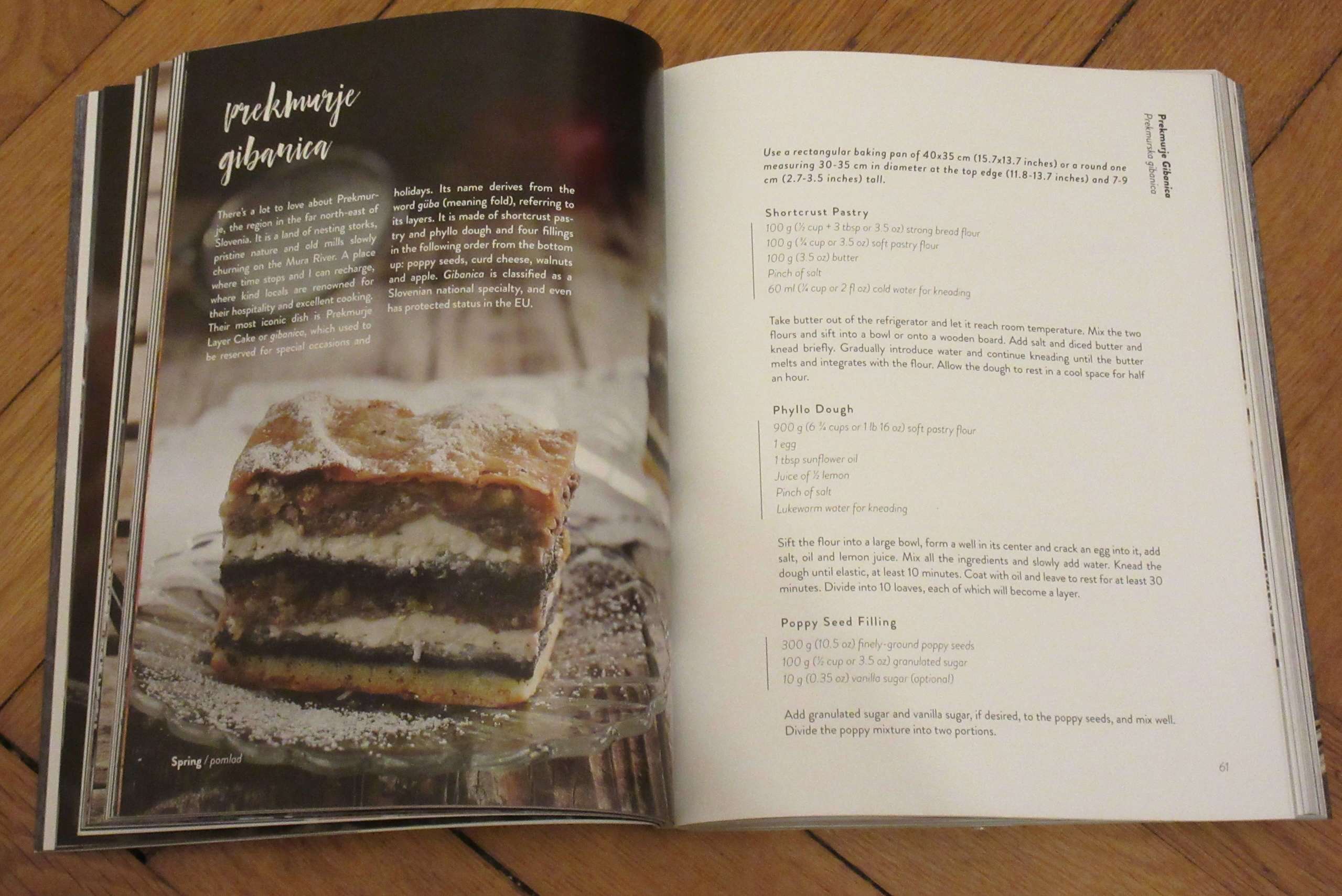
In town and looking for a gift or souvenir? Take a look at Cook Eat Slovenia - the book.
Know that big triangular building behind the train station? Learn what's inside here.
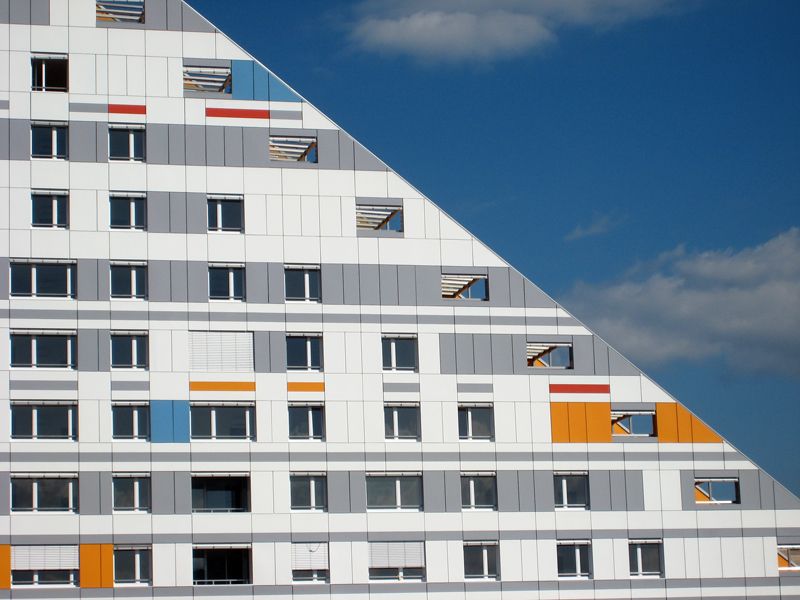
Photo: Genius loci d.o.o.
Clubbing
Compared to some European capitals it can seem that nightlife in Ljubljana ends rather early, especially along the river, but there are still bars that stay open late and clubs were you can dance until dawn, and perhaps the best place to stumble across something interesting is the legendary Metelkova. Be aware it's a grungy kind of place and not for all tastes, but also that there's considerable variety to found within the various clubs there, from death metal to electropop, gay cabaret to art noise. You can read "the rules" of the place here. And if you're curious about how the place started then read our story, and look at some pictures, about last year's 25th anniversary.
Božidar - DJ events aren't too common here, but when they happen they often have a big name.
Channel Zero – DJs shows here include regular dub nights as well as electronic music.
Gala Hala – Another Metelkova venue, you can sometimes hear bhangra and Bollywood here, but more often funk, hip hop, breakbeat and so on.
Klub Cirkus – The more commercial end of clubland, and a venue that aims to serve the student party scene. Expect house, anthems, and bangers.
Klub K4 – The home of techno, old and new, along with various other electronic genres,
Koncertna Dvorana Rog– There are irregular DJ sets at this underground (not literally) venue at the far end of Trubarjeva cesta, and they range from techno to goa to drum'n'bass.
Orto Bar– 80s and 90s throwback nights can often be found here, along with rock-based DJ sets.
Live music
Balassi Institute – Free Hungarian music, when available, from the Hungarian cultural institute just a short walk downriver from Dragon Bridge.
Cankerjev dom – The main arts venue in the country hosts classical, opera jazz, folk and occassinally pop.
Cvetličarna – Regional pop and rock concerts can be found here.
Channel Zero – This Metelkova venue sees live shows from punk and rock bands, as well as others.
Gala Hala – Another Metelkova venue with indie bands of various styles.
Kino Šiška – One of the top live venues in the city, with a varied programme that include indie, rock, pop, experimental, hip hop, and so on.
Klub Gromka – Live music is often metal, from sludge to stoner, death to thrash, while punk bands also appear, as do others.
Križanke – The venue that hosts the Ljubljana Festival often has classical music, and some rock, in the open air.
Orto Bar– The home of live rock, metal, punk and other guitar-based genres.
Pinelina dnevna soba – LIve music is rare here, but it does happen.
Slovenska filharmonija– Classical music in the centre of town.
SNG Opera and Ballet - As the name suggests, here you'll find the best of opera and ballet in the country.
Španski borci - While dance is more common here, they also have some contemporary and experimental music shows.
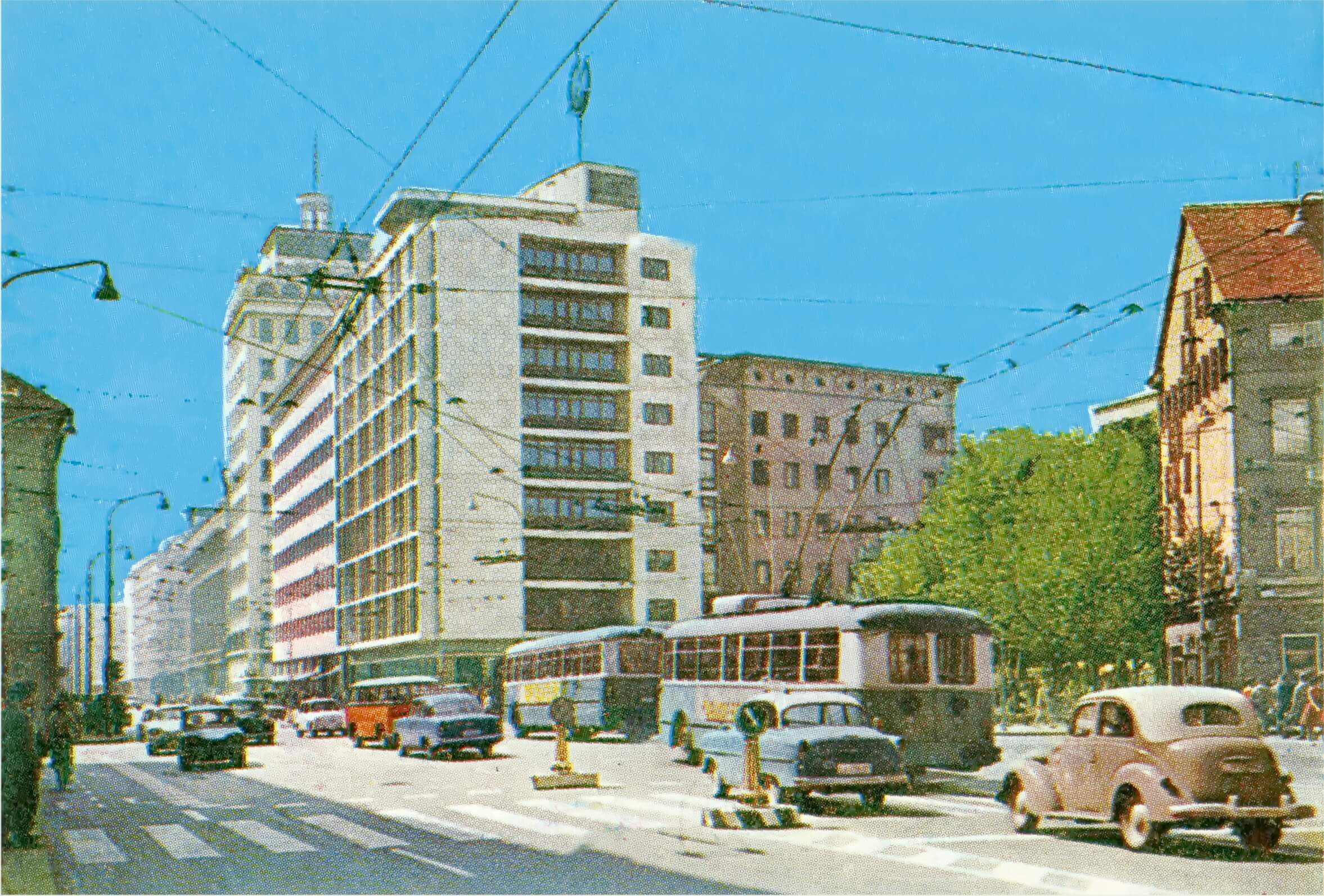
Slovenska cesta, 1968. Wikimedia. See more pictures of Old Ljubljana here
Theatre and dance
Cankerjev dom- The main arts venue in the country always has something of interest going on.
Gledališče IGLU - IGLU Theatre – Saturday night this group is usually putting on an English improv show somewhere in town, but it’s generally promoted after this is written, so check the Facebook before putting on your shoes.
Kino Šiška – One of the top live venues in the city also hosts some dance performance, often of the more experimental variety.
Mini Teater Ljubljana –The English schedule of varied performances, for adults and children, for the month is here.
Ljubljana Puppet Theatre - Puppetry has a long and noble tradition in Slovenia, and you can see performances for children and adults (including non-puppet shows) drawing from the Theatre's rich repetoire as well as new productons.
SNG Opera and Ballet - As the name suggests, here you'll find the best of opera and ballet in the country.
Španski borci - The home ofcontemporary dance(and the EnKnapGroup) in Slovenia.
Pocket Teater Studio– There are regular flamenco evenings at perhaps the smallest venue town, but note that the number of seats is very limited, and thus you should make a reservation via This email address is being protected from spambots. You need JavaScript enabled to view it. or 070 325 522.
Harm reduction and drug testing
Alcoholics Anonymous has an English language meeting every Tuesday, 19:00 in Poljane – email for more details: This email address is being protected from spambots. You need JavaScript enabled to view it.
Drogart is an organization that aims to minimise harm on the party scene, and offers drug-testing services and reports on their webpage. It’s in Slovene, but you can Google translate it or work things out yourself, and our story on the group is here.You can find the latest warnings on fake drugs and high strength pills and powders (in Slovene) here. However, be aware that all the usual drugs are illegal in Slovenia.
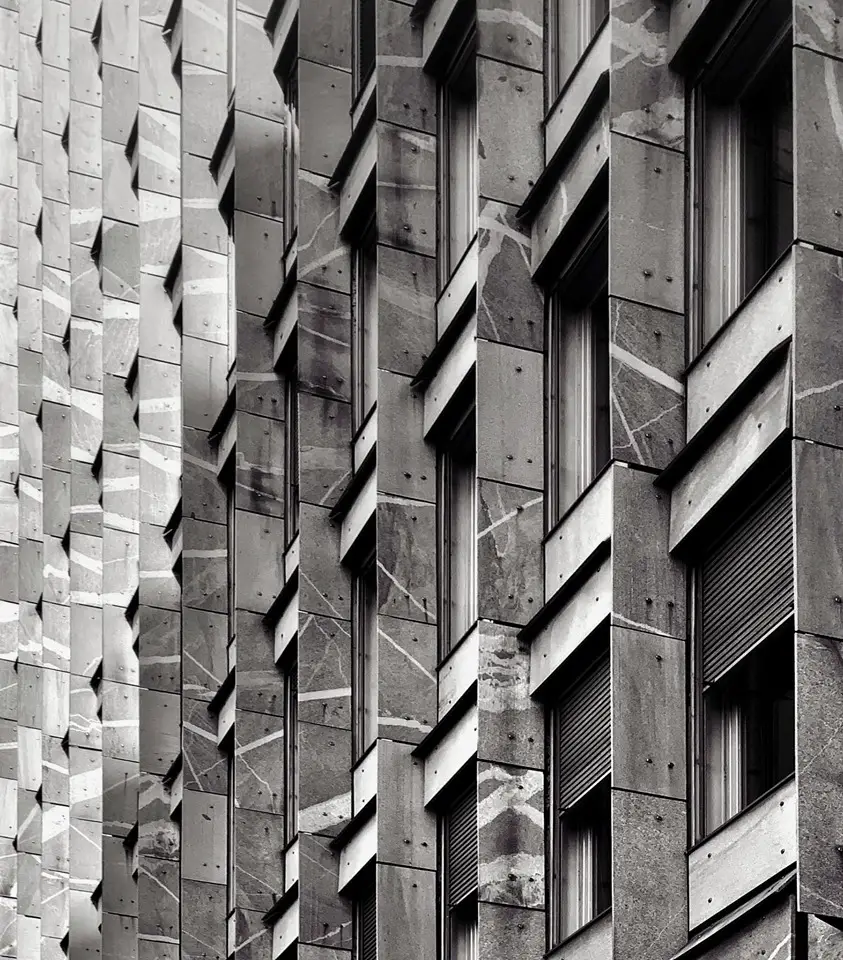
Photo: Igor Andjelič. See more of his work here
Looking for something different to eat? Trubajeva cesta, running right by Dragon Bridge, has the greatest concentration of "ethnic food" places in Ljubljana, and thus perhaps the country. Check out our walk through guide as of June 2019.
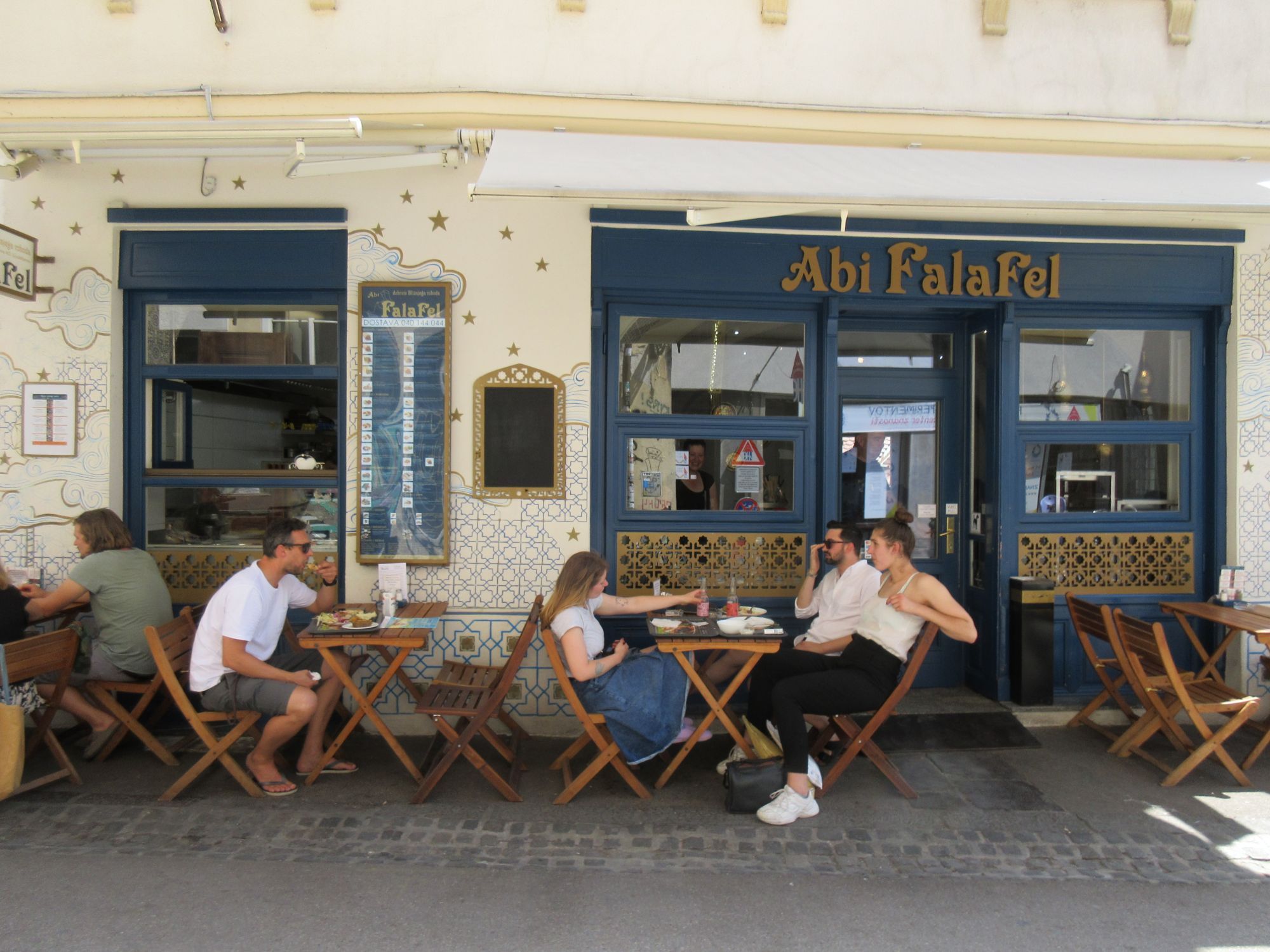
In warmer days than you'll see this week. Photo: JL Flanner
Things to do with children
You can find our Top 12 list of things to do with kids in Ljubljana here. If want to read more about the philosophy behind the wonderful House of Experiments look here, while our trip to the Museum of Illusions is documented here, and there’s always riverside walks, pizza and ice cream. With regard to the latter, take a look at our guide to six places that serve good ice cream in winter, and thus are serious about the dessert.
Mini Teater Ljubljana – The season sees a lot of puppet performances for children, in Slovene, at this theatre not far from Križanke. The English schedule for the month is here.
Ljubljana Puppet Theatre - The puppet theatre near the Central Market and next to the Castle funicular has a full programme or shows, for children and adults, with the schedule here.
LGBT+ Ljubljana
If you're looking for more general links on "gay Slovenia", including a history of the scene and various projects, then you can find that here, while our stories about the community can be found here.
Klub Monokel – This lesbian bar in Metelkova is open every Friday, although sometimes there are other events
Klub Tiffany –And the gay bar next door is also open on Fridays. Other things coulds also be planned, so click on the name to find out.
Pritličje – This seems to be the only "always open" LGBT-friendly cafe / bar / events space in town, and perhaps the country, so it's a good thing it's such a good one, open from morning to night, and with fliers and posters letting you know what's happening outside the narrow confines of, say, a general interest online what's on... guide.
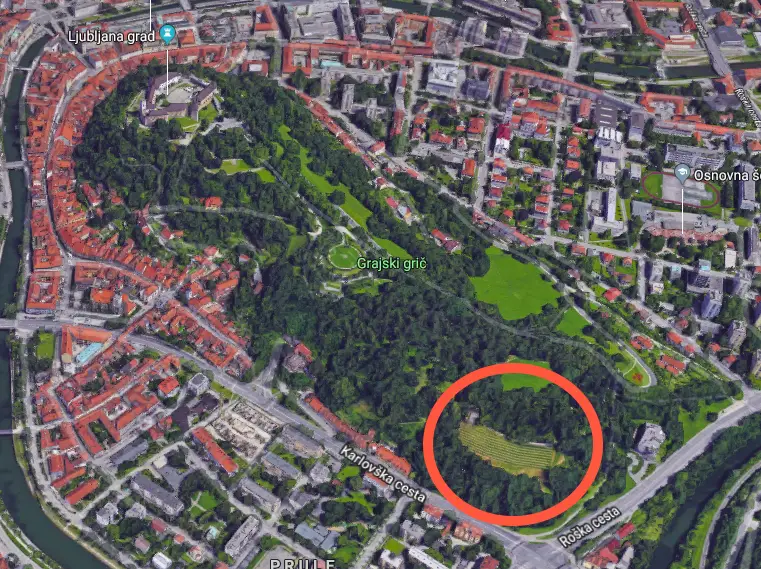
Screenshot from Google Maps, showing the location of the Castle vineyard
Ljubljana Castle
The city’s main attraction is said to be the top tourist draw in the country overall, and to my mind it earns a spot near the top just for the history and views. But beyond that the current owners, the City of Ljubljana, have laid out a varied, interesting and enjoyable programme of events, one that rewards regular revisits.
On all 2020 is an Exhibition of Slovenian History, included in the price of a Castle ticket, that takes you through prehistory and the Romans, the Middle and early Modern Ages, the 19th century and WWI, the Kingdom of Yugoslavia and WWII, Yugoslavia, independence and after. On until 22 March 2020 you can enjoy an inflatable spatial installation from Nina Koželj (free to enter).
At one of Castle hill there's a many walking and jogging paths, with good views of the city. At the other end, where the Castle sits, there’s a lot more than fresh air on offer. There are guided tours, restaurants, a café, Castle museum, puppet museum, a Watchtower you can climb to the highest point in the city, art shows, dances, live music, movies under the stars, festival days and more – enough to reward multiple trips up the hill through the year. All of these activities and events can be found on the Castle website, while on TSN you can see “25 things to know about Ljubljana Castle” here, and “Ten Ways to Enjoy Ljubljana Castle” here.
Museums and galleries
Most public galleries and museums are closed on Mondays, although not the National Museum.
Aksioma – On from 19 February 9 March is The Abstraction of Nature by Anna Ridler – “Anna Ridler’s work stands out for her effort to establish a feedback loop between herself and the machine, producing work that displays and thematises the amount of human labour involved in the process, from coding, to producing a dataset, to educating the machine.”
Bežigrajska galerija 2 – Take a trip to Vodovodna cesta 3 and you'll find nothing this week, according to the schedule, as the place will be between exhibitions.
Cankerjev dom – On until 3 March 2020 there's an exhibition on Ancient Greek Science and Technology. Details here.
Plečnik's desk. Photo: JL Flanner
Plečnik’s House is worth a visit if you want to learn more about the architect who gave Ljubljana much of its character, and it's also in a really nice part of town, Trnovo, just a short walk or cycle upriver. Read about our guided tour here. Until 10 May you can see History of the Future. Archetypes of Plečnik's architecture – summarising the ideas of selected Plečnik works.
Balassi Institute – The Hungarian culture centre is next to a Spar and Hofer, and not far from Dragon Bridge, and always has something interesting going on. Learn more here.
City Gallery – On until 5 April there’s a show from Vlado Martek, called Exhibition with Many Titles, the second part of a retrospective exhibition by the Croatian conceptual artist.
City Museum – The Museum in French Revolution Square an interesting permanent exhibition on the history of Ljubljana, from prehistoric times to the present day, with many artefacts, models and so on that bring the story alive.You can read about my visit here. On until August 2020 there’s Book. Reason. Knowledge. From Protestantism to Enlightenment (1500–1800), which presents the processes and events that encouraged and fostered the cultural and spiritual development in Ljubljana from the end of the 15th to the beginning of the 19th century – from humanism and Protestantism to the Enlightenment. More on that here.
The Faces of Ljubljana in the City Museum. Photo: JL Flanner
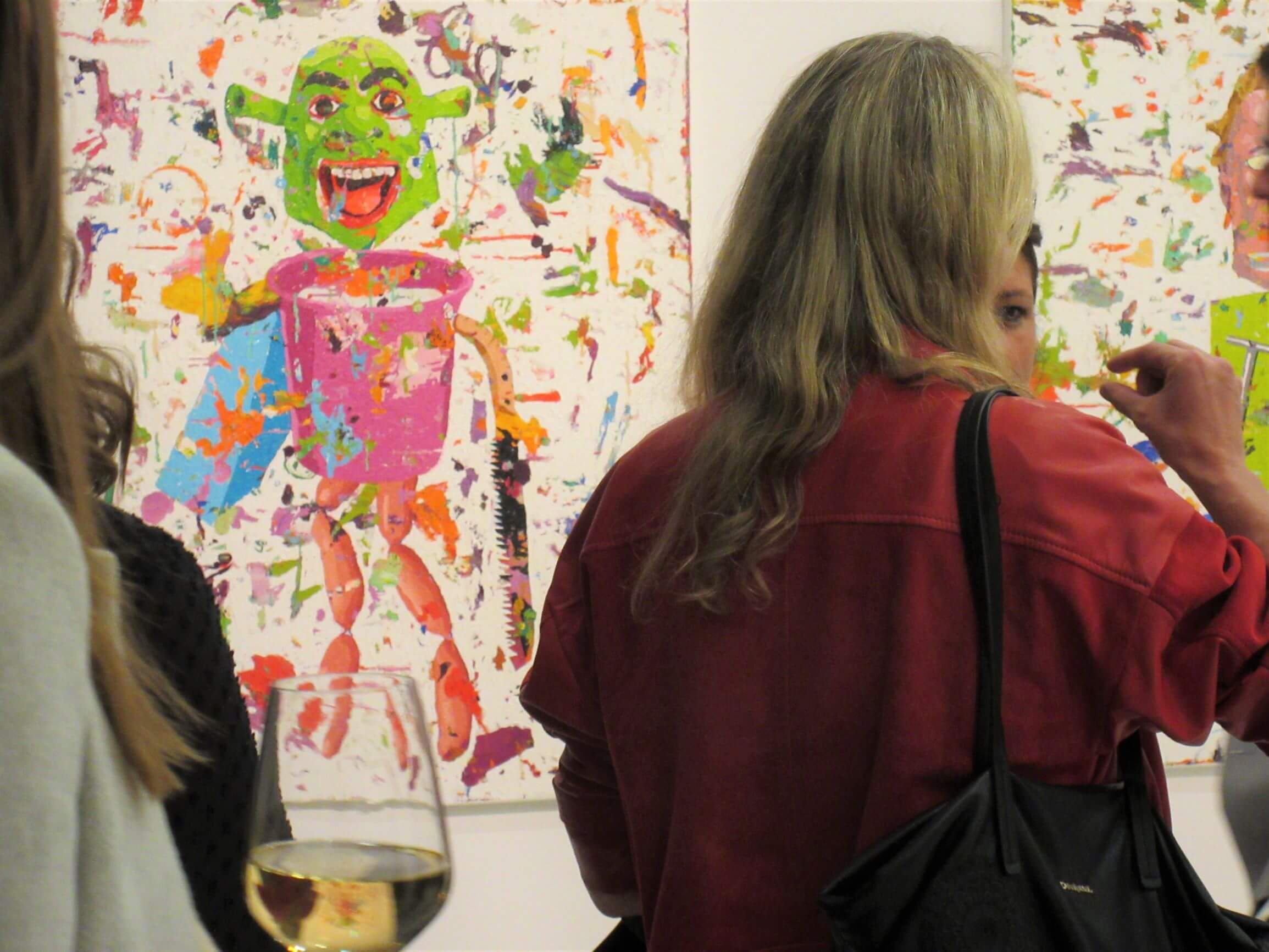
Drink like a pro - find gallery openings. Photo: JL Flanner
Galerija Kapelica –Eirik Brandal: Electonic sculpture is on until 17 March, with the promotional image shown below.
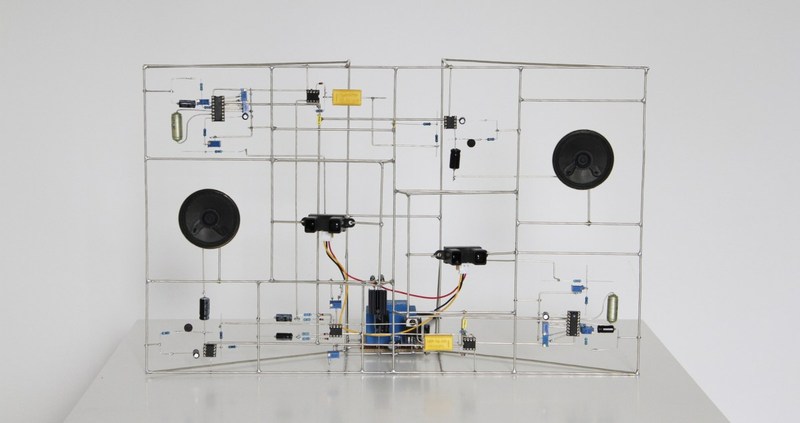
Galerija Vžigalica – Until 15 March you can enjoy Counter:Movement / Gegen:Bewegung, an exhibition of contemporary artistic positions in Carinthia, selected by the Klagenfurt University Cultural Centre – the Universitätskulturzentrum UNIKUM.
International Centre of Graphic Arts – A show of works by Helena Tahir.
MAO – The Museum of Architecture and Design has much of what you'd expect, along with some temporary shows and a good cafe. On until 31 January 2021 is An Object and a Collection, showing part of the museum’s valuable and extensive collection of objects related to architecture, design, and photography of the 20th and 21st centuries.
Moderna galerija – The main branch of this gallery, to be found near the entrance to Tivoli Park, has a good collection of modern art, as well a nice café in the basement.
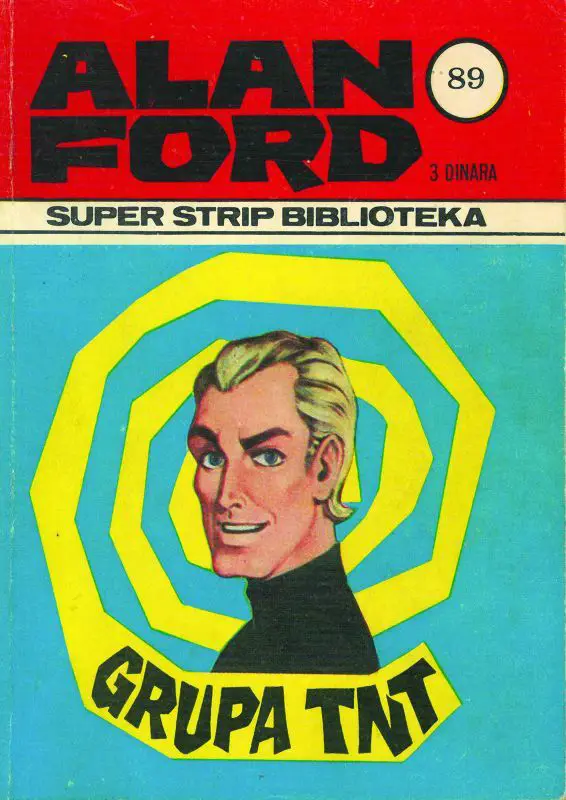
Alan Ford was recently at the National Gallery - read more about this comic book here.
National Gallery – The country’s main gallery has “the best” of what’s on offer from the Middle Ages to non-contemporary modern visual arts, and is in a great location for exploring other areas, just by Tivoli Park and opposite the main branch of the Moderna galerija. You can read about our visit to the room containing sacred art from the Middle Ages
The real Robba Fountain can be found in the entrance to the National Gallery - the one you see in the Old Town is a genuine fake, as seen below and reported here.
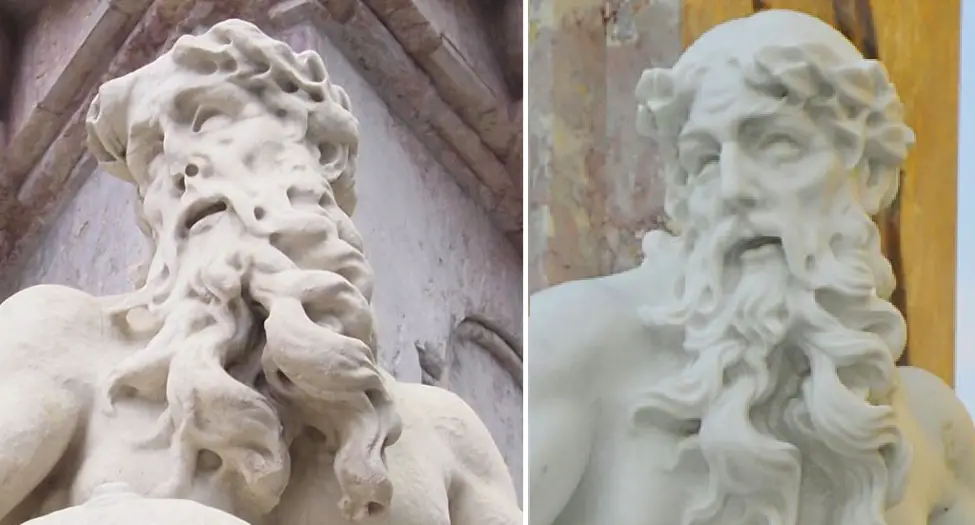
Photo: JL Flanner
National Museum of Slovenia – There’s plenty to see in the permanent collection here, from Roman times, Egypt and more. Meanwhile, the museum's Metelkova branch, located between one branch of the Moderna galerija and the Ethnographic Museum has some rooms on Church art, furniture and weapons, with the latter including more guns than you'll see anywhere else in town, and quite a thrill if coming from a nation where such objects are not household items. A Millennia of Metallurgy in Slovenia is on until 3 May 2020.
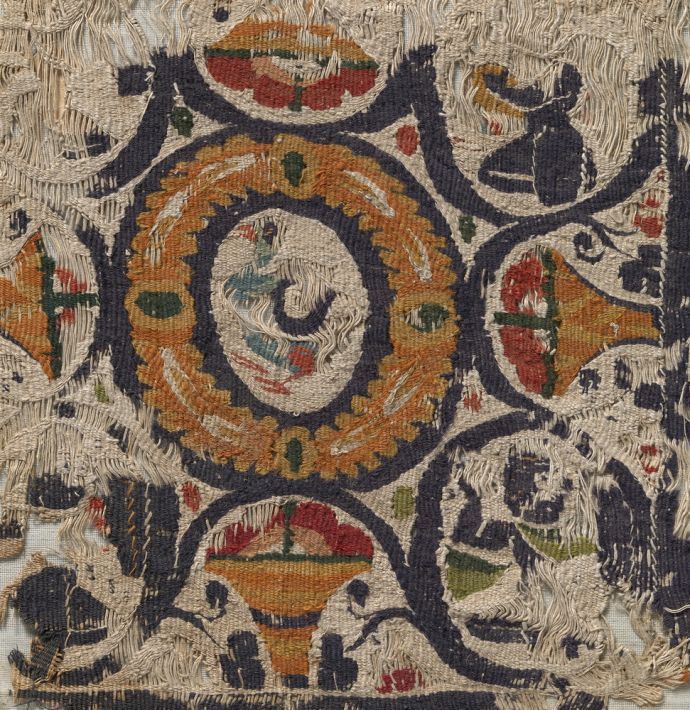
A fragment of a Coptic textile; 5th–6th cent.: Upper Egypt; linen, wool; National Museum of Slovenia. Photo: Tomaž Lauko
Until 24 May 2020 you can see Coptic Textiles from the Collection of the National Museum of Slovenia at the branch in the Metelkova museum quarter, by the Ethnographic Museum and the Museum of Contemporary Art. Details.
Natural History Museum – Until 18 June 2020 there’s Enlightened Natural Sciences: Scopoli and Zois, looking at the lives and legacies of two pioneering naturalists, on the both Slovene and global scales, Sigismondo (Žiga) Zois and Giovanni Antonio Scopoli.
National Museum of Contemporary History - Tucked away in park Tivoli, you can see a permanent exhibition on Slovenians in the 20th century.
Slovene Ethnographic Museum – The museum has two permanent exhibitions. One of these is called Between Nature and Culture, and has a great collection of objects from Slovenia and around the world, well worth the trip up to the third floor to see it (as recounted here). Nani in Ljubljana is on until 1 March 2020, in which Nani Poljanec, the folk creator and author of the exhibition, reveals fragments of his life, his roles and his mission. Until the same date there’s also a show on “Ravenski pust”, a Shrovetide custom which, according to village elders, represents an ancient pagan wedding and has been performed for more than a hundred years.
Union Experience – The Ljubljana-based brewer has a museum showing the history of the company, with the ticket also including access to part of the factory and a few samples of the product. You can read about our visit here.
It's not a formal museum, but if you're interested in "Yugo-stalgia" then you'll enjoy a trip to Verba, a small, privately run space that's crammed with objects and pop culture items from the era, and is conveniently located at the start of one of the short walks to the castle. It's also a great place to take pictures, if you leave a donation, and you can read more about it here.
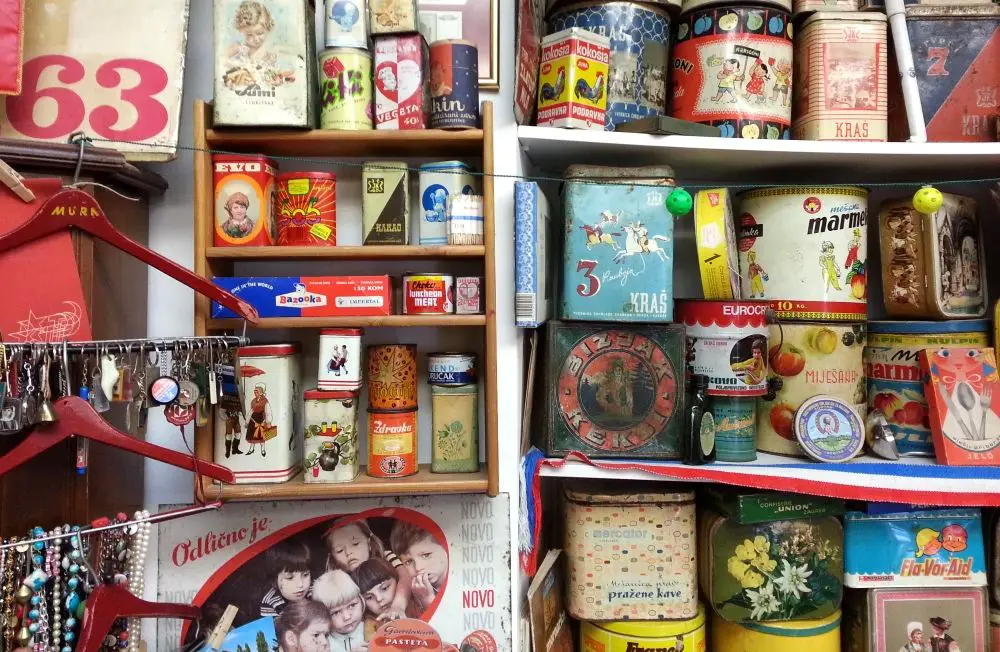
Verba. Photo: JL Flanner
Alternative Ljubljana isn't a museum or gallery, as such, but instead turns the city streets into a museum and gallery. Learn more about their tours of street art, history and LGBT Ljubljana here.
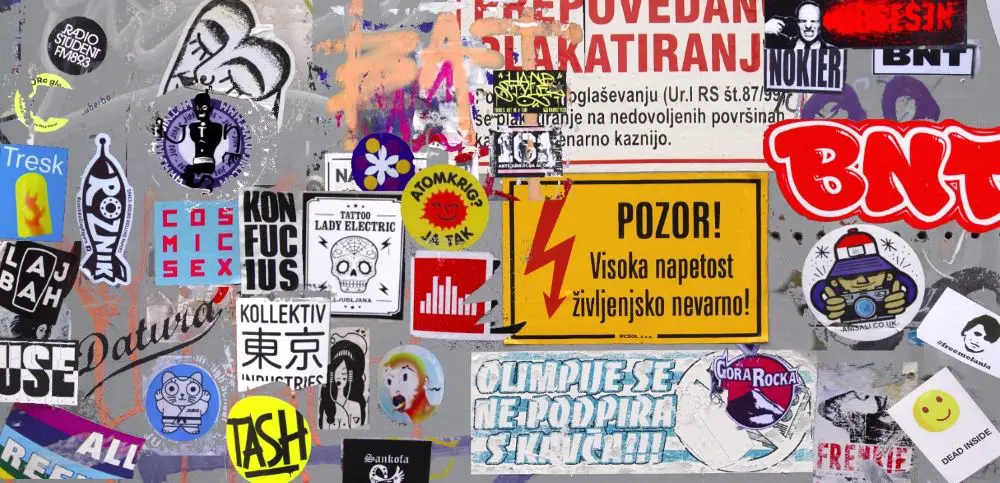
Photo: JL Flanner
Other things to do in Ljubljana
Learn more about Ljubljana with "25 things to know about Slovenia's green city of dragons", or take a look at our guide to spending from four to 48 hours here.
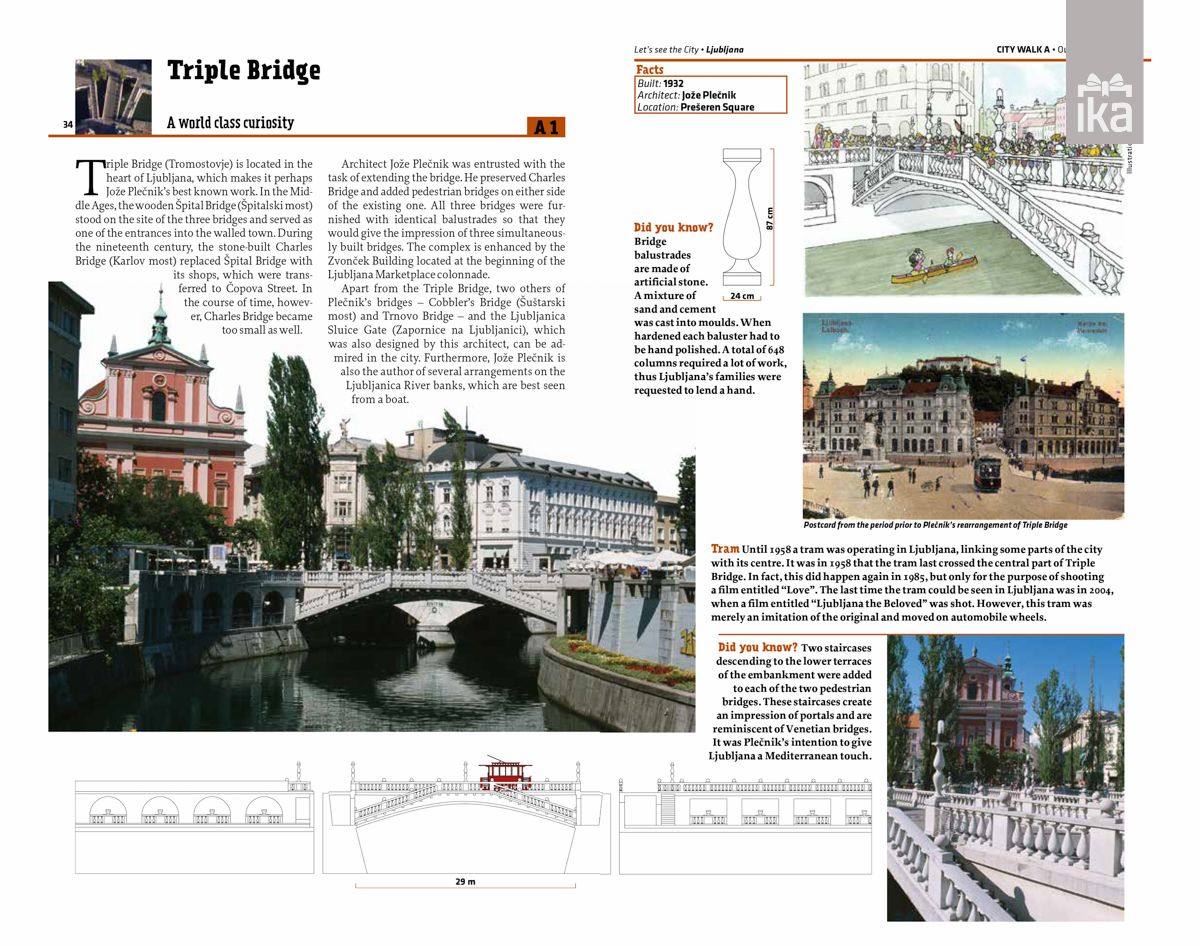
If you like the city's architecture then check out this great book, Let’s See the City - Ljubljana: Architectural Walks & Tours, with our review here and a page from the book shown above. We took a walk with one of the authors who showed us how much there is to learn and enjoy if you slow down and pay attention - read about that here.
Ljubljana has some beautiful buildings from the early 20th century, in the Secessionist style, like the one below. Learn where to find them here.
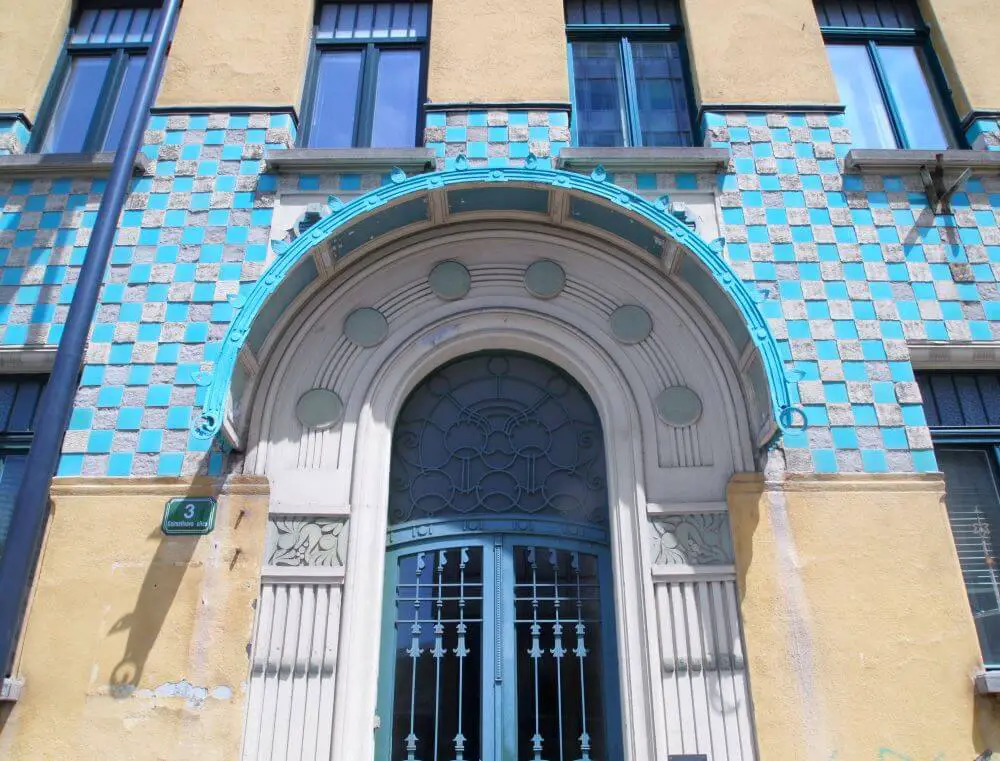
Photo: Neža Loštrek
For something a little more brual, check out Republika trg / Republic Square, in the heart of the political quarter.
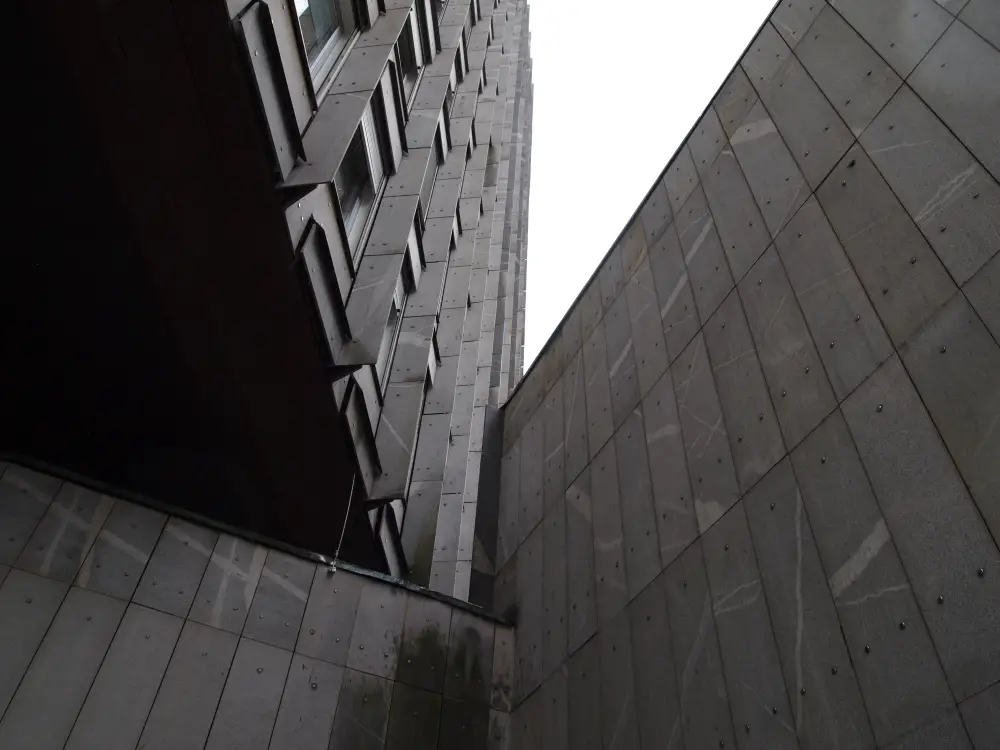
Photo: JL Flanner
Photo: JL Flanner
Some view of the city you can only get from the river. If you'd like to take a boat ride then read about my experience here. If you'd like to spend an evening painting with others, then take a look at Design with Wine, which organises painting parties on Trubarjeva cesta,
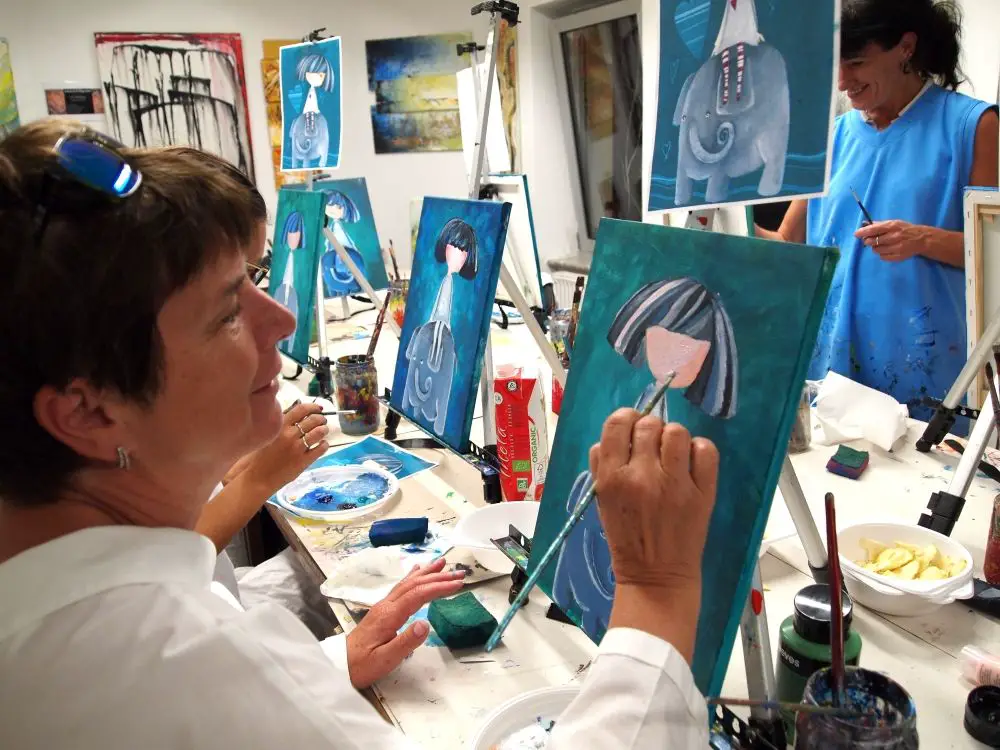
If you want to see some antiques, then check out the wonderful Antika Carniola, as discussed here. The man behind it, Jaka Prijatelj, has a fine eye for life on this street, as you can see on his Facebook account.
Photo: JL Flanner
If you’re in town and want to go jogging or walking in nature, why not take another look at the Castle, with a brief guide to the trails here. If you want something bigger, head to Tivoli Park.
And if you're bored with the Old Town, why not take a walk, cycle or boat ride to nearby Špica and enjoy the riverside life. Learn more about that here.
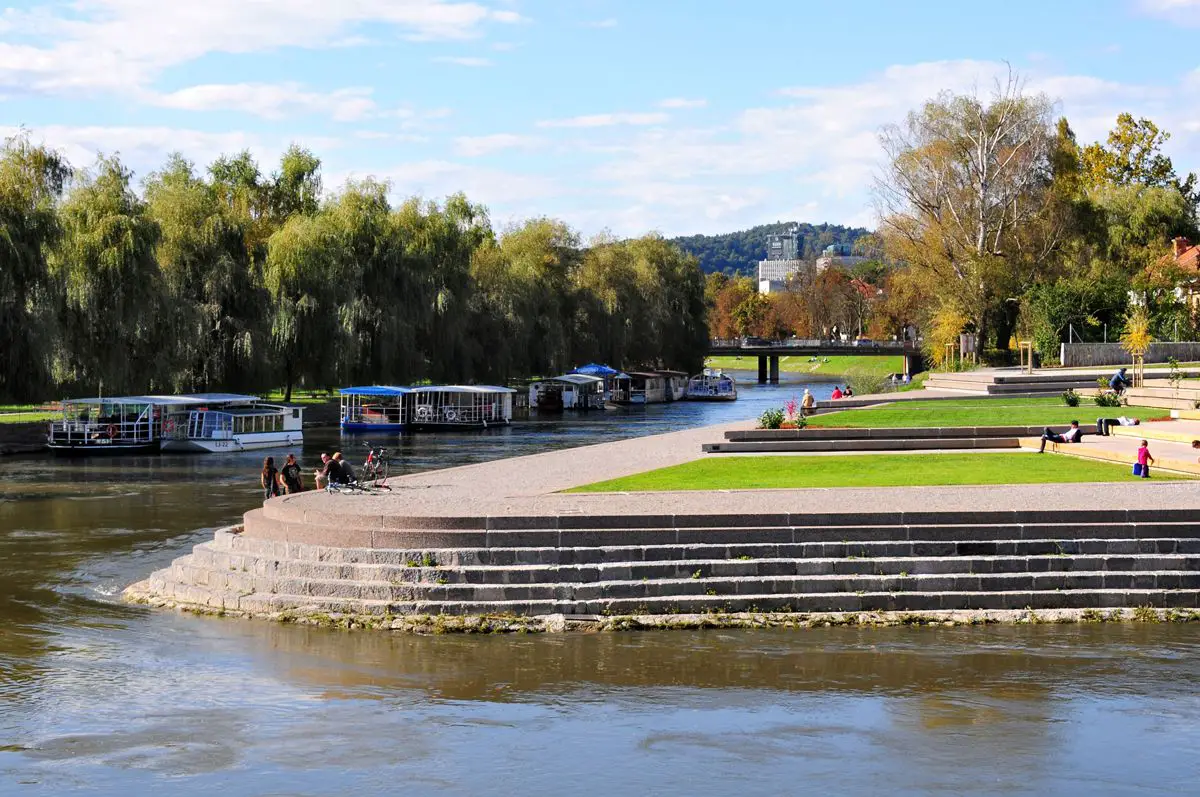
visitljubjana.si
Why would anyone want to eat Dinner in the Dark? Learn more about this unique experience in Ljubljana here.
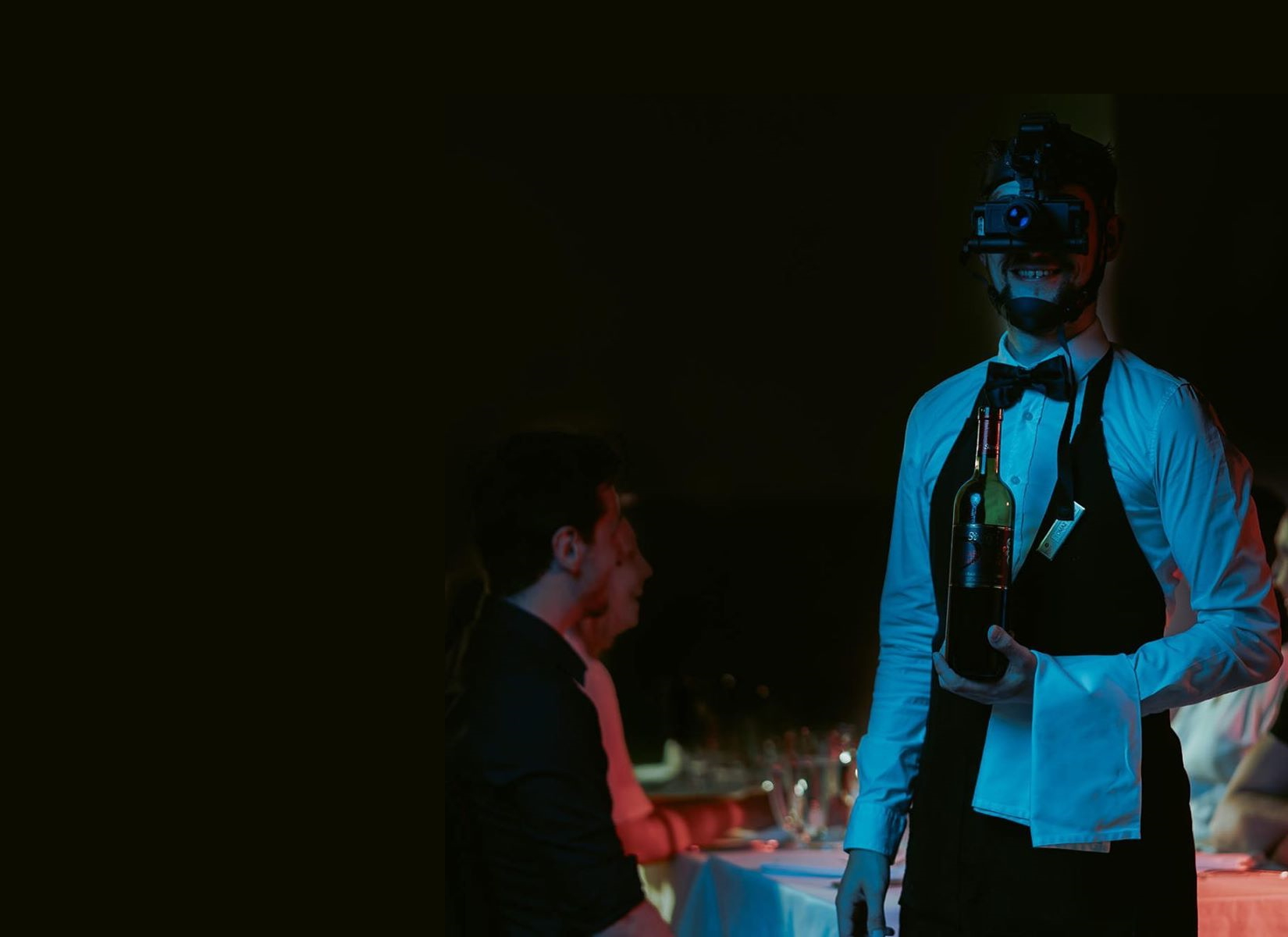
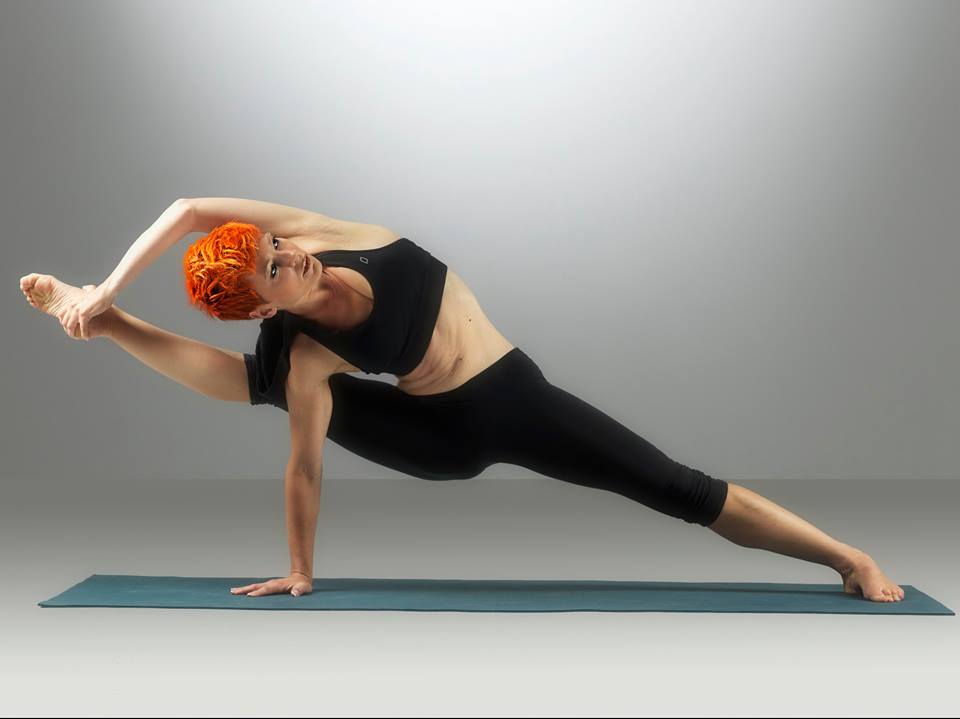
Want to stretch and breath? Then check out our list of drop-in yoga classes for tourists, visitors and the uncommitted. We go to Nataraja Studio, by Dragon Bridge, and here's a story about it.
Prefer to have someone else stretch you? The check out the totally legit massages you can get from Sense Wellness - either in one of their spas or in you home, office or hotel. (And - to repeat - these are legit and non-sexual in nature)
There are some golf courses near Ljubljana, but even ones further away are not far, as seen in our list of all the golf courses in Slovenia, which usually run until the first snow.
![]()
Photo: maxpixel.net, public domain
Daytrips
Most of Slovenia is only a few hours from Ljubljana, and you can easily visit Lake Bled, Lipica Stud Farm, Postojna Cave, Predjama Castle, the coast and other locations, while if you'd like to take a photo of from that bench in Bled, then you can learn how to get there here. If you’re looking for something more ambitious, then check out our recent guide to the 17 members of the Association of Historical Towns of Slovenia. We've also written guides on spending from four to 48 hours in Bled and Piran.
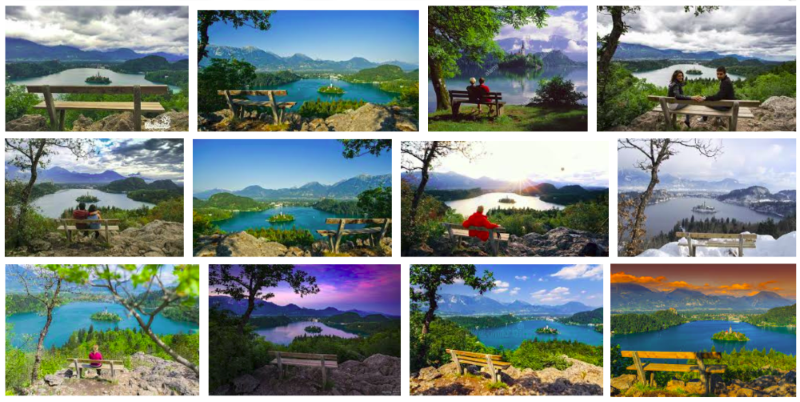
Photo: Google Image Search
Getting around
If you want to get a Ljubljana Tourist Card, which gives you travel on the city buses and entry to a lot of attractions, then you can read more about that here, and if you want to use the bike share system, as useful for visitors as it is for residents, then you can learn more by clicking this. Visitors with reduced mobility will be pleased to find that downtown Ljubljana is generally rated as good with regard to accessibility, and that there’s a free, city-sponsored app called Ljubljana by Wheelchair highlighting cafés, attractions and so on with ramps, disabled bathrooms and Eurokey facilities, which you can read about and download here. Manual wheelchair users can also borrow, for free, an attachment that will motorise their equipment, as reported here.
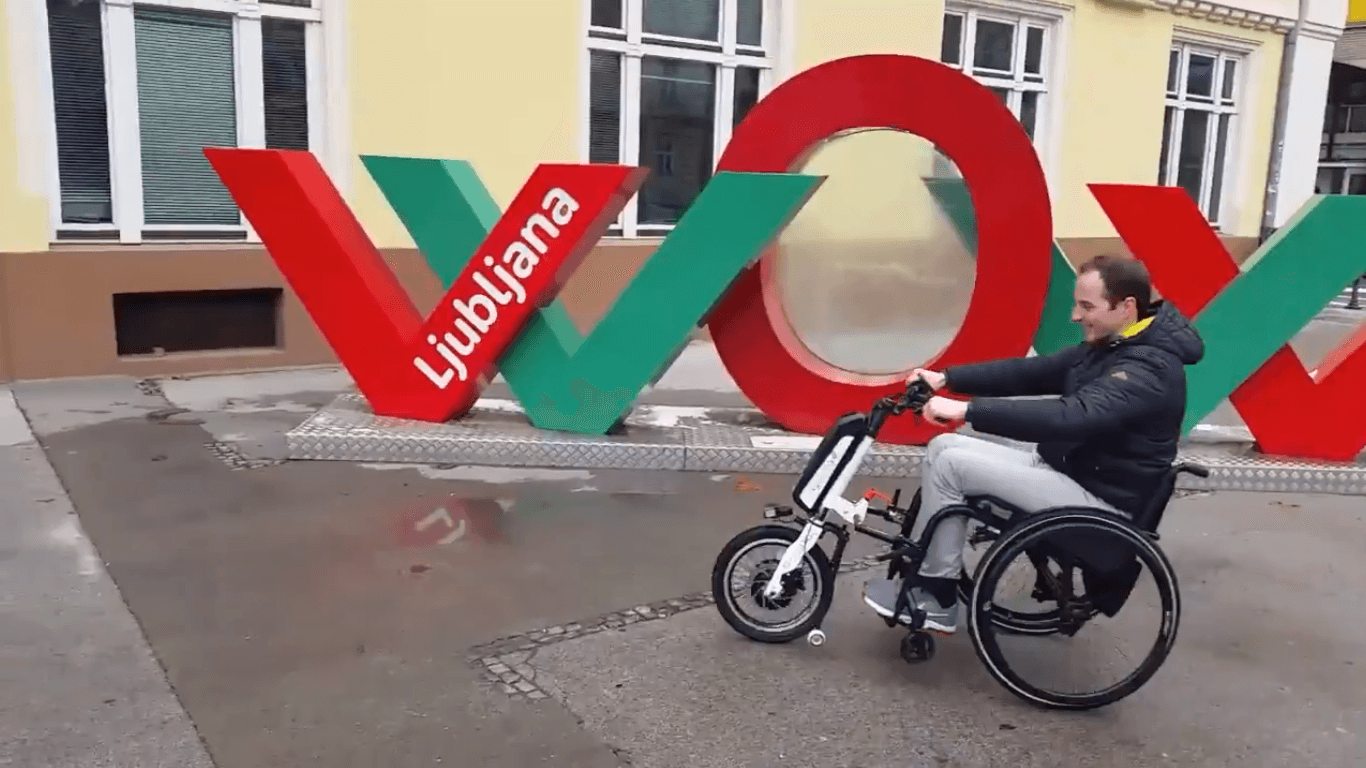
Screenshot from a Twitter video
If you’re driving into town and don’t know where to park, our guide to how to park in Ljubljana is here.
Emergencies
Ljubljana is a small and relatively safe city, but if need to contact the police then there’s a special number for foreigners, and that’s 113.
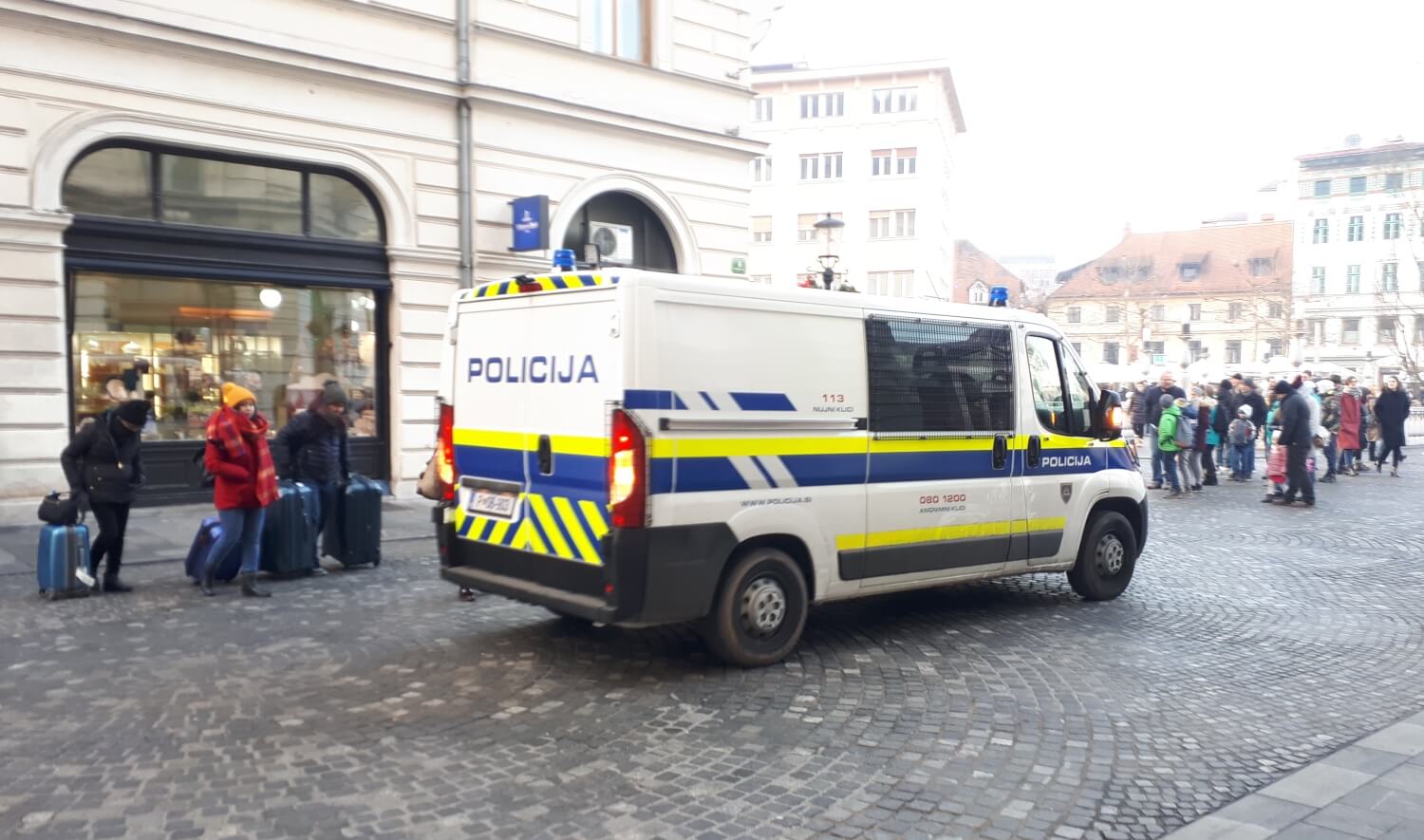
Photo: JL Flanner
There aren't many places to eat after midnight, and most of them are by the train station, as reported here.
Want / need cigarettes but the stores have closed? Here's an incomplete list of bars downtown that will satisfy your craving for the demon weed. While if you’re having trouble with the ATMs then here’s a guide to the Slovene you’ll see on screen. If you get a hangover then find out where to get paracetamol (and prescription drugs) in Ljubljana here, while details on emergency birth control can be found here.
A 22 year-old from Slovenia, Benjamin Dolić, is going to represent Germany at Eurovision 2020 in Rotterdam this May.
Dolić first appeared on a stage at the age of 12, in “Slovenia’s Got Talent” .
In 2016 Dolić joined “D base” for the Ema Eurovision song contest, in which artists attempt to win the chance to represent their countries at the main even, although they failed to qualify for the finals.
After moving to Berlin via Switzerland, Dolić gained further recognition as a singer when he was runner-up in the 2018 Voice of Germany talent show.
The song “Violent Thing”, which Dolić is going to interpret as the 2020 German Eurovision entry, was written by the Austrian-Bulgarian producer and songwriter Borislav Milanov and his team at Symphonix, while the staging of his performance in Rotterdam is being prepared by Justin Timberlake’s choreographer and artistic director, Marty Kudelka.
The video is already getting very positive reviews, as the bop hit has already gone viral in Germany, which is also standing very high in the betting markets, at seventh place, compared to 40th for Slovenia’s entry.
Strangely enough, it appears bets are being placed even for countries who haven’t chosen their entries yet. Four new national representatives will be known tonight, those for Croatia, Iceland, Moldova and Estonia.
Last year’s “I'm sorry, zero points” certainly won’t repeat for Germany this year. And we also expect that 12 points of Germany’s eventual score will come from Slovenia.
The covers and editorials from leading weeklies of the Left and Right for the work-week ending Friday, 28 February 2020
Mladina: Public will keep a close eye on Janša
STA, 28 February 2020 – The left-wing weekly Mladina puts the pending power shift in Slovenia in the context of a nationalist-populist wave that gripped Europe in 2015. It issues a scathing criticism of the Democrats (SDS) and those about to enable a Janez Janša government, saying they are foolish to think Janša has changed his ways and that the Slovenian public will stand by quietly.
The weight of the decision that MPs face next week as parliament will vote on the new government "is much bigger than they are willing to admit to themselves", the weekly's editor-in-chief Grega Repovž says in the commentary entitled The Public is Watching and Remembering.
"They are being calculated in their actions, but it seems they are not really aware they will carry the consequences of their decision for the rest of their lives," he says, arguing the MPs know very well what Janša's Democrats (SDS) are about.
Repovž equates the SDS with "hatred, a giant factory of lies, constant and grave elimination of those not sharing their views, overt racism and exclusion".
"Many people and institutions have for years been living under this pressure and this has left Slovenian democracy deeply wounded," Repovž says, speaking of year after year marked by inciting of hatred, attacks on scholars, culture workers, media, individual journalists.
"Of course there was also abuse of power, the circumvention of laws (for instance those governing the funding of parties from abroad), and last but not least corruption and all kinds of dodgy manoeuvres with cash, including the inability of the party's president to explain the origins of his."
Repovž says that statements by MPs and party leaders show they know exactly who they are putting in power and thus they also know what Slovenian society will go through because of their decision.
He argues that they may be trying to convince themselves that there will be no culture war and ideological attack on society this time around, but notes that these already started before the coalition agreement was signed and that there has been too much of this for any politician serious about democracy to swallow.
"There is one habit that Slovenian politicians are simply incapable of losing: they keep underestimating the public and treat citizens as small children that can be fooled with stupid tricks. Well, these citizens have shown too often now how they feel about this arrogant attitude of the elite and how to demonstrate this sentiment."
Reporter: "Deep state" wants Janša in power
STA, 24 February 2020 - Reporter, the right-leaning political magazine, believes the "deep state" is the force slotting the pieces together to result in a new Janez Janša government. "Janša is literally being gifted his third government by the deep state," it says in Monday's commentary.
Arguing that the Left, "the party most strongly led by the deep state", is the main reason why the Marjan Šarec government came crashing down, Reporter says that "if it was in the interest of old networks to prevent Janša's renewed ascent to power, they could probably have done that."
"Sometimes it is necessary to take a step back to then take two steps forward. The Communists had successfully deployed these tactics thirty years ago, during the change of political system and independence, when they temporarily gave up power so that two years later, dressed up as social democrats and liberals, they could return," the commentator says.
Now the deep state wants to let Janša carry out some urgent but unpopular measures, just like his government did eight years ago, counting on people rebelling for "a new episode of pan-Slovenian popular uprisings". Two years later, the left can then return to power even stronger, the paper says in Gift by the Deep State.
All our posts in this series are here, while all our stories on Janez Janša are here
What follows is a weekly review of events involving Slovenia, as prepared by the STA.
If you’d like to keep up on the daily headlines then follow those here, or get all our stories in your feed on Facebook.
FRIDAY, 21 February
BRUSSELS, Belgium - Coming out of an EU summit dedicated to the bloc's next seven-year budget, which ended without an agreement, Prime Minister Marjan Šarec said the European Commission had presented a technical proposal which recipients of the cohesion funds rejected because they saw it as a "provocation".
STOCKHOLM, Sweden - Foreign Minister Miro Cerar started a two-day visit to Sweden by meeting Swedish Foreign Minister Ann Linde and Speaker Andreas Norlen. Zhe officials stressed the importance of an EU future for Western Balkan countries, and discussed sustainable development as well as the EU's challenges.
LJUBLJANA - Police Commissioner Tatjana Bobnar announced she would file a defamation complaint against Democrats (SDS) MP Žan Mahnič, the vice-chair of the parliamentary Commission for the Oversight of Intelligence and Security Services (KNOVS), after he had accused her of lying about alleged spying on politicians by the police.
LJUBLJANA - Slovenian banks generated a combined pre-tax profit of EUR 597.4 million last year, up 12.5% on the year before and the highest on record. Profit after tax rose by 8% to EUR 534.9 million, central bank figures show.
SATURDAY, 22 February
MARIBOR - Two Slovenian passengers from the quarantined cruise ship Diamond Princess were flown home on a chartered flight, touching down in Maribor after being airlifted from Japan to Germany. The two, who will be in self-isolation at home for two weeks, were tested for the novel coronavirus at Maribor airport, and the results were negative.
NEW YORK, US - Slovenia has advanced ten spots to place 21st in the 2020 Bloomberg Innovation Index, which is the greatest improvement among all 60 countries surveyed for the list. Slovenia scored a total of 73.93 points out of 100 possible, compared to 88.21 by the first-ranked Germany.
MONDAY, 24 February
LJUBLJANA - The Secretariat of the National Security Council met to discuss Slovenia's preparedness for a coronavirus outbreak in the wake of the first reported cases in Italy. Health authorities in Slovenia said no additional protective measures were needed and denied persistent rumours of patients testing positive for the virus in Slovenia.
THESSALONIKI, Greece - Foreign Minister Miro Cerar urged Western Balkan countries to make reform headway as he addressed a high-level conference in Thessaloniki designed to push forward the stalled EU enlargement process to the region. Cerar highlighted "the need for in-depth reforms, in particular in rule of law and the fight against corruption and organised crime".
LJUBLJANA - A protest was held in front of the UK Embassy in Ljubljana as Britain started hearing a US case requesting extradition of WikiLeaks' founder Julian Assange. Much like in other towns around the world, the protesters called for media freedom and the freedom of speech.
TUESDAY, 25 February
LJUBLJANA - In a surprise move following a week of talks behind tightly closed doors, the top executive bodies of the Democrats (SDS), Modern Centre Party (SMC), New Slovenia (NSi) and Pensioners' Party (DeSUS) confirmed they were forging a coalition led by SDS head Janez Janša. Outgoing Prime Minister Marjan Šarec said he was not surprised at the prospect of a new Janša government, which he saw from the start as one of the possible outcomes of his resignation.
LJUBLJANA - Public institutions started taking precautionary measures to protect staff against coronavirus infections after first cases of the virus were confirmed in neighbouring Italy, Austria and Croatia, sparking fears of an outbreak in Slovenia. Schools started to cancel planned activities and field trips, while retailers reported increased footfall as shoppers grabbed by panic stocked up on essentials.
MARIBOR - A company in Chinese ownership that used to lease the Maribor Airport plans to file a damage suit against the state after it terminated the lease in early 2019, whereupon the airport management was turned over to a state-owned consulting and engineering company. Aerodrom Maribor said it will demand EUR 2.1 million in damages plus costs and lost profits.
WEDNESDAY, 26 February
LJUBLJANA - President Borut Pahor formally nominated Janez Janša, the leader of the Democrats (SDS), for prime minister after four parties reached an agreement to form a centre-right coalition. Janša said the coalition agreement showed the four parties were willing to seek compromise solutions and would work to tackle the most pressing issues that Slovenia faces.
LJUBLJANA/BELGRADE, Serbia - The Slovenian NLB bank announced it had signed an agreement with the Serbian government to acquire the 83% state stake in the bank Komercijalna Banka. The deal worth EUR 387 million is pending regulatory approval and is expected to be finalised in the last quarter of the year. NLB's market share in Serbia by total assets will increase to over 12%.
BRUSSELS, Belgium - Slovenia has made no progress in reforming long-term care. Some progress has been achieved in public procurement, and in labour market policies, and limited progress was detected in economic policies facilitating the transition to a low-carbon economy, shows a European Commission report.
BRUSSELS, Belgium - Two Slovenian regions, Savinjska in the east and the central Zasavska region, were designated among a hundred EU regions eligible for financing from the EU fund for a fair green transition. They will be entitled to EUR 92 million.
LJUBLJANA - Central Slovenia, one of Slovenia's 12 statistical regions, will get EUR 93 million in EU and state subsidies for 21 development projects under an agreement signed by regional officials with the government. Just over EUR 45 million of the total funding comes from EU cohesion funds, Economy Minister Zdravko Počivalšek said.
THURSDAY, 27 February
OTOČEC - Slovenian President Borut Pahor and Croatia's Zoran Milanović called for the resolution of all open bilateral issues as they met just over a week after Milanović was sworn in. They urged the governments of both countries to work towards excellent relations in all fields.
LJUBLJANA - The outgoing cabinet adopted measures to contain the new coronavirus in case it spreads to Slovenia. Most notably, it released strategic commodity reserves to ensure enough protective gear. The government however noted that borders with neighbouring countries would remain open since there was no reason for panic.
LJUBLJANA - The outgoing government adopted the National Energy and Climate Plan, a set of energy policy and climate change mitigation measures until 2030. It called the document "a key step towards a climate-neutral Slovenia until 2050". Infrastructure Minister Alenka Bratušek said the goal was to cut greenhouse gas emissions by 36%, improve energy efficiency by at least 35% and have at least 27% of energy come from renewable sources.
All our posts in this series are here
STA, 28 February 2020 - The Slovenian web portal Oštro published on Friday along with two more investigative journalism groups in the region a report alleging that a Slovenia-based company was used to launder illegal Hungarian government money and finance media propaganda in North Macedonia.
The story - coming after reports showing entrepreneurs close to Hungarian PM Viktor Orban helped fund Slovenian media with ties to the Democrats (SDS) and Macedonian media associated with the country's VMRO-DPMNE party - is based on an investigation that had been started by Macedonian financial police in 2018.
The file of the Macedonian police, which allegedly acted after receiving a hint from Slovenian colleagues, is also said to contain documents obtained by the Organized Crime and Corruption Reporting Project and shared with its local centres in Slovenia (Oštro), North Macedonia (Investigative Reporting Lab Macedonia, IRL) and Hungary (Direkt36).
The centrepiece of the investigation is a EUR 2.94 million advertising campaign contract signed in 2017 by Hungarian entrepreneur Peter Shatz both on behalf the contracting party, his Slovenian publishing company R-POST-R, and the contractor, Macedonian company Target Media.
Screenshot ostro.si. You can see the story referred to here
Shatz, who has also been heavily engaged in dealings around Slovenian media associated with the SDS, used Target Media to buy the Macedonian Alfa TV and establish the Macedonian web portal ripostmk.com, both of which were publishing the ads stemming from the dubious EUR 2.94 million contract that ran from August 2017 to February 2019.
According to the findings of the Macedonian financial police, the marketing involved products by two small Hungarian companies - one of them purporting to sell olive oil from Croatia's Dalmatia region - that "do not exist on the Macedonian market" and whose import into Macedonia was not recorded before or after the ads were ran.
Moreover, indicating that the value of the contract was overblown, IRL quotes a Macedonian marketing expert as pointing out that the biggest client of a marketing agency in Skopje pays less than half a million euro annually for prime time ads at six TV and radio stations and web portals.
Macedonian police is said to suspect that the funds originated from illegal sources and that the aim had been to "legalise" them through Macedonian companies, meaning that money laundering is suspected.
The investigation is led by the director of the Macedonian financial police Arafat Muaremi, who suspects the money came from the Hungarian state budget.
Muaremi told IRL the police had informed the Macedonian prosecution of its findings in August 2019 but that no indictment had been filed. The prosecution said it was acquainted with the case but failed to explain why no action had been taken.
Muaremi added the investigation was started on the basis of a hint from Slovenian colleagues, who also "informed us that the money came from Hungary". According to Muaremi, Hungarian authorities have "not been willing to talk or cooperate with us in any way".
Slovenian police have not commented, but they did repeat that they had been conducting since March 2018 an investigation "of a suspected criminal offence whose perpetrator is prosecuted ex officio".
The Slovenian web portal necenzurirano.si has reported that this investigation pertains to the contentions EUR 450,000 loan taken out by the SDS in 2017 with Bosnian citizen Dijana Đuđić.
All our stories about Hungary and Slovenia are here
STA, 28 February 2020 - The arson of the Trieste National Hall (Narodni dom) by the Fascists a century ago marked the start of a painful period for the Slovenian community that ended up on the Italian side of the border. A documentary shedding light on that event and what followed will premiere in Ljubljana tonight.
"It's a painful and often overlooked and too often simplified story about our western border and about Primorska. The arson of National Hall was the start of that cruel story and I dear say the beginning of Fascism in Europe," the author of Arson (Požig) Majda Širca has told the STA in an interview.
The Trieste National Home was built in 1904 to the design of architect Max Fabiani (1865-1962). It was commissioned by the Trieste Savings and Loan Society; as a Slovenian cultural centre, it was home to a theatre, hotel, savings bank, a ballroom, a print shop; most Slovenian associations.
"Trieste at the time of Austria-Hungary was a multi-cultural city in which various nations and cultures lived together. By building the National Hall, Slovenians made it clear they weren't going to build churches like other nations. They decided to build a space of multi-cultural dialogue (...)"
"Slovenians knew they needed a representative, visible and effective place in the middle of Trieste. Slovenians at the time lived on the city's outskirts, in small villages. They were a rural population that supplied Trieste but they didn't have their visible place in the city centre," Širca said.
The project was a thorn in the flesh of bigots who looked down on Slovenians, calling them schiavi (Italian for slaves). After the end of First World War, tensions escalated in Trieste, with a number of rallies held.
On 13 July 1920, one of those rallies escalated into a violent conflict in which shouts were heard that a Slav had killed an Italian. A mass of people then stormed the National Hall and torched it, historian Kaja Širok says in the film. Witnesses say that police and army officers stood by watching.
"That event later went down in history as 'the Slavic Crystal Night'. On that day several stores, print shops and buildings owned or managed by Slovenians were torched," the historian said.
Badly damaged in the fire, the National Hall was rebuilt between 1988 and 1990 and now houses the headquarters of the college of modern languages for interpreters and translators, part of the University of Trieste, as well as a Slovenian information centre.
The Slovenian community has been unsuccessfully trying to get back the building, with their hopes placed in this year's centenary when the presidents of Slovenia and Italy, Borut Pahor and Sergio Mattarella, are expected to meet in Trieste to mark the anniversary.
The film Arson also features excerpts of old comments by Boris Pahor, the 106-year-old Slovenian writer from Trieste who witnessed the National Hall arson and has often spoken out about the issue and has often said that Fascism in Europe started with that arson.
The year the National Hall went up in flames Slovenian territory was subject to barter, Širca says. Under the Treaty of Rapallo, signed in November 1920 by the Kingdom of Serbs, Croats and Slovenes (later Yugoslavia) and the Kingdom of Italy, a third of Slovenian ethnic territory was awarded to Italy.
Ethnic Slovenians were put under huge pressure, faced assimilation attempts, denial of their language and territory, turbulence which Širca seeks to portray in her documentary, although she believes each of the key events included would merit a film of its own.
The film traces individuals' stories to the Basovizza victims, the Slovenians that were the first victims of fascism in 1930, the Fascist and Nazi occupation, the concentration camps and executions, the 1975 Treaty of Osimo and the establishment of a new border between Slovenia and Italy.
The documentary also touches on the foibe, the Karst pits where the victims of post-WWII reprisals by Yugoslav Communists were thrown.
"If you visit Basovizza, there are two monuments there not far from one another. One is an Italian monument to foibe, where every year the complex and complicated history of this space is sadly drastically simplified and abused, and the other a monument to the Basovizza victims.
"There's 15 years of history between the two, but I believe it always needs to be read in the context of that space. You cannot isolate one event from the other, just like you cannot but link the things together," said Širca, who served as Slovenia culture minister between 2008 and 2011.
She is concerned about what she sees as a dangerous loss of memory in Slovenia and elsewhere: "We know the past is being adapted, history is being horse traded and facts are being dressed in new clothes. Like in the past the new clothes are better worn trendy and we know how hard such simplification of history hits the Slovenian community."
The film, which will premiere at the National Museum of Contemporary History before being shown on TV Slovenija on Sunday night, is her contribution so that younger generations should learn about that difficult and multi-layered history: "If someone drums but one truth into their heads, it sticks. It's what is happening in the world today."
Check the date at the top of the page, and you can find all the "morning headlines" stories here. You can also follow us on Facebook and get all the news in your feed.
A schedule of all the main events involving Slovenia this week can be found here
This summary is provided by the STA:
First estimate puts Slovenia's GDP growth in 2019 at 2.4%
LJUBLJANA - Slovenia's GDP expanded by 2.4% in 2019 after growing by 1.7% in the final quarter year-on-year, shows the first estimate released by the Statistics Office. The annual increase is slightly below what had been announced in projections. The Statistics Office said external demand had had a positive impact on economic growth even though the growth of exports was more moderate than in 2017 and 2018. Exports increased by 4.4% in 2019, which compares to 6.1% the year before.
Vote on Janša as prime minister-designate expected on Tuesday
LJUBLJANA - The National Assembly is expected to vote in a secret ballot on the appointment of Janez Janša, the head of the Democrats (SDS), prime minister-designate next Tuesday. The plenary will start on Monday with questions for members of the outgoing government, and MPs are expected to put the vote on Janša on the agenda for Tuesday. In order to be confirmed, Janša needs at least 46 votes in the 90-member legislature and he is expected to be confirmed with a slight majority.
Protest held against incoming government
LJUBLJANA - A group of NGOs staged a protest against the emerging centre-right coalition, with the participants stopping outside the headquarters of the Pensioners' Party (DeSUS) and Modern Centre Party (SMC) to urge them to reconsider their decision to join the "coalition of hate". More than a thousand protesters reminded the SMC and DeSUS of their promise ahead of the 2018 election not to join a coalition headed by Janez Janša, the Democrats' (SDS) leader. On the sidelines of the protest, left-leaning parties engaged in a blame game over the new government.
N Macedonian police said to suspect Hungarian money laundered through Slovenia
LJUBLJANA - The Slovenian web portal Oštro along with two more investigative journalism groups in the region run a report alleging that a Slovenia-based company was used to launder illegal Hungarian government money and finance media propaganda in North Macedonia. The report - coming after those showing entrepreneurs close to Hungarian PM Viktor Orban helped fund Slovenian media with ties to the Democrats (SDS) and Macedonian media associated with the country's VMRO-DPMNE party - is based on an investigation that had been started by Macedonian financial police in 2018.
Committee in heated debate over foreign ownership of media
LJUBLJANA - Members of the Culture Committee called on the relevant authorities to look into the flow of funds used to finance media in Slovenia after a heated debate on Thursday, initiated by the call to discuss the Hungarian financing of media with ties to the Slovenian Democratic Party (SDS). The six-hour session, which was called at the request of the Marjan Šarec List (LMŠ), saw the debate expand beyond the main topic, with the ownership of a number of Slovenian media houses being discussed.
Five Slovenian MEPs join petition against rise of hate ideology
BRUSSELS, Belgium - Five Slovenian MEPs, including Milan Brglez (S&D/SD) as the first among 45 signatories, joined a petition calling on the European Commission and the EU Council to respond to the rise of hate ideology and hate speech. The MEPs also urge the preservation of core EU values, starting with the protection of human rights and rights of minorities.
Social partners support EU minimum wage, differ on concept
LJUBLJANA - A debate hosted by MEP Milan Brglez showed that social partners in Slovenia broadly support the introduction of a EU-wide minimum wage, but disagree over what kind of concept should be used. The outgoing government is in favour of a minimum wage based on the cost of living, which Labour Ministry State Secretary Tilen Božič said was a concept that emphasises the human aspect. Employers are more in favour of a mathematical approach that draws on macroeconomic indicators.
Port operator Luka Koper reports 32% decline in net profit for 2019
LJUBLJANA - Luka Koper, the operator of Slovenia's sole maritime port, saw a group net profit plunge by 32% to EUR 40.4 million in 2019 due to a slowdown of global trade. Revenue remained broadly flat at EUR 228.7 million, six percent below plans, the company said. Profit before interest, taxes, depreciation and amortisation (EBITDA) declined by over a quarter to EUR 73.1 million and operating profit (EBIT), at EUR 45.3 million, was 35% lower than in the year before.
Insurance group Sava's profit up 16.7% to EUR 50.2m last year
LJUBLJANA - The insurance group Sava collected EUR 599.3 million in gross premiums last year, 9.7% more than in 2018, while its net profit was up 16.7% to EUR 50.2 million. The company's unaudited financial results show that the gross premium growth was contributed mainly by Slovenian non-life insurance business, which was up 12.2%, and the non-life insurance business in foreign countries (+20.3%).
Boxmark Leather to lay off almost 300 workers by end-April
KIDRIČEVO - The foreign-owned car upholstery maker Boxmark Leather announced it would lay off a total of 288 workers at its sole remaining Slovenian location, in Kidričevo, by the end of April, with 157 handed pink slips today. The management said the company would stay in the country, denying the rumours about production closure.
Annual inflation in February at 2% due to costlier food, housing
LJUBLJANA - Consumer prices in Slovenia were up by 2% on average in February over the same month in 2019, mostly due to higher prices of food and housing. More expensive holiday packages were the main factor in the monthly inflation, which stood at 0.7%, the Statistics Office reported. Food prices, gong up by 4.3%, contributed 0.6 of a percentage point to the annual inflation, with the prices of meat and fruit increasing by over 11%.
Survey unemployment in last quarter of 2019 lowest on record
LJUBLJANA - The survey unemployment rate in Slovenia stood at 4% in the fourth quarter of 2019, down 0.8 percentage points from the previous quarter, reaching the lowest point since 1997, when the Statistics Office started to implement the survey on the quarterly basis. The survey unemployment rate dropped the most in the 50-64 age category, by 1.1 percentage points to 3%.
Survey find Slovenians optimistic about EU future
BRUSSELS, Belgium - The latest Barometer survey shows that Slovenians are more optimistic about the future of the EU than citizens from other member states. As many as 69% of the Slovenians polled are very or quite optimistic about the EU future, which compares to the EU average of 60%. Slovenians see healthcare, social care and pensions as well as immigration and climate change as main national challenges, while immigration and climate change (27%) are deemed most burning issues at the EU level.
Documentary on Trieste National Hall arson premiers
LJUBLJANA - The arson of the Trieste National Hall (Narodni dom) by the Fascists a century ago marked the start of a painful period for the Slovenian community that ended up on the Italian side of the border. Author Majda Širca sheds light on that event and the traumatic developments coming in its wake in the documentary Arson (Požig), which premiered in Ljubljana. She told the STA in an interview that the arson marked the beginning of Fascism in Europe.
Visiting Ljubljana? Check out what's on this week, while all our stories on Slovenia, from newest to oldest, are here
If you're learning Slovenian then you can find all our dual texts here
STA, 28 February 2020 - A meteor appears to have disintegrated over south Slovenia on Friday, causing an explosion that was so strong it was even detected by earthquake sensors in the south of the country.
The Slovenian Environment Agency said on Twitter it had detected the blast at 10:32am. People heard it in an area stretching from Novo Mesto to the Croatian port city of Rijeka and the capital Zagreb.
Slovenian and Croatian media have published pictures of white smoke in the sky, estimated to be at a height of about 30 kilometres.
Slovenian astrologist Herman Mikuž told the STA that it was possible that meteorite fragments - a meteor becomes a meteorite once it hits the ground - have survived the disintegration, but this will require reconstructing the trajectory to identify a target location for a possible expedition.
According to Mikuž, it is difficult to find meteorites in Slovenia due to dense vegetation, but the odds of that happening are higher in winter than in summer.
The last major meteorite event in Slovenia was in 2009, when fragments of a meteorite hit the ground near Jesenice in north Slovenia. Three fragments weighing between 250 grams and almost a kilo were recovered.
In honour of the event, Jesenice now hosts an annual space-themed festival.


